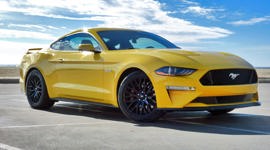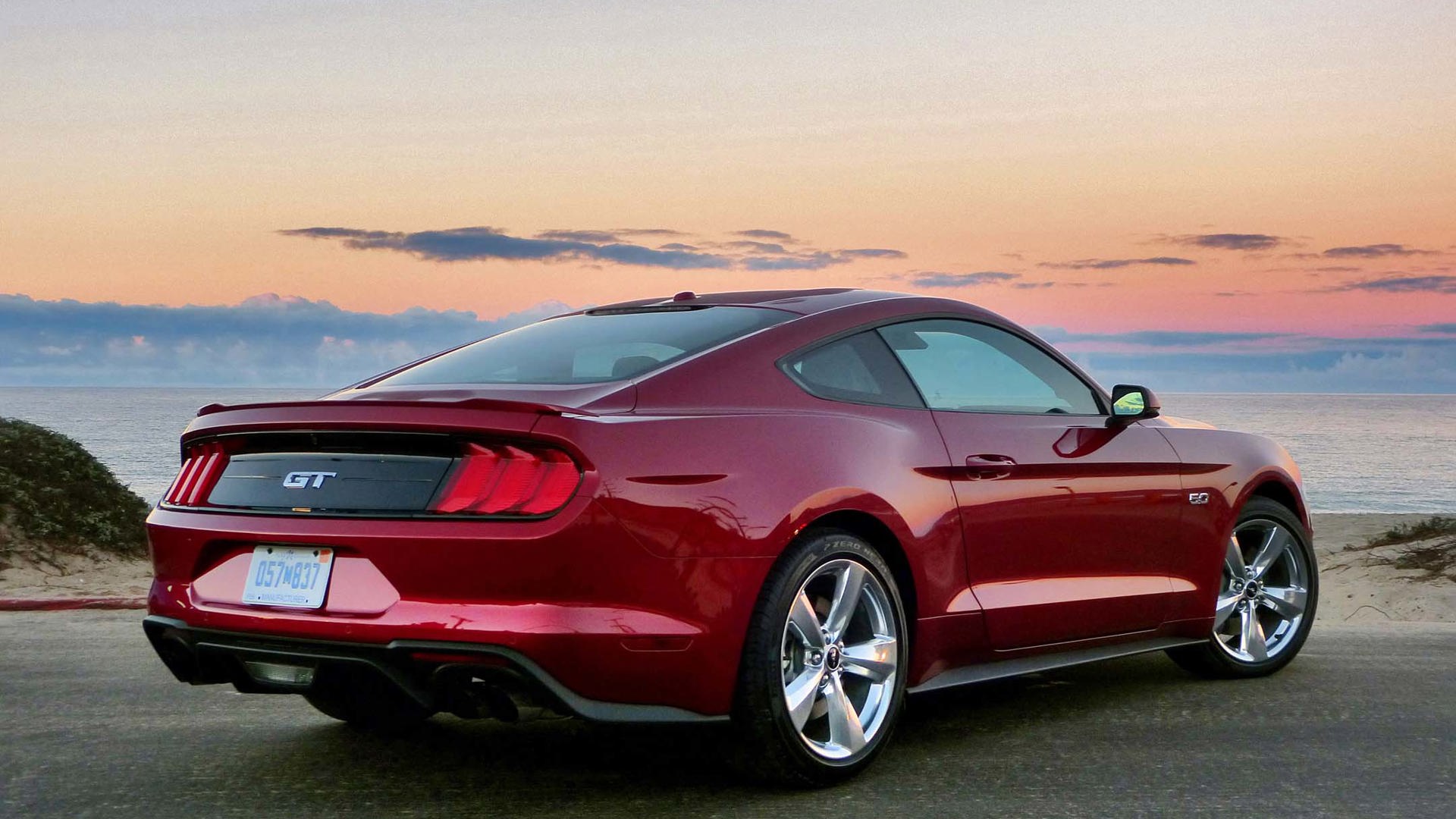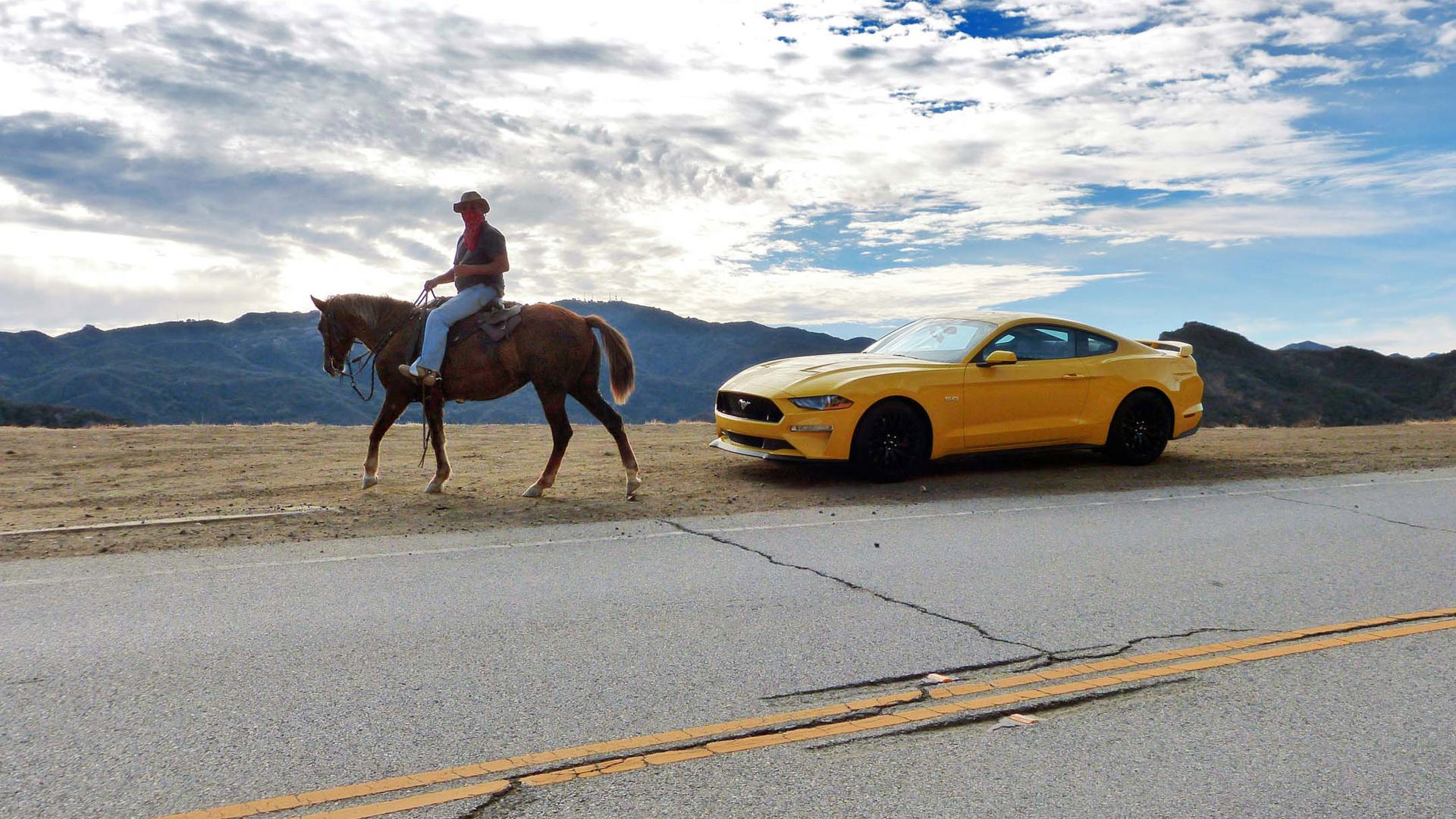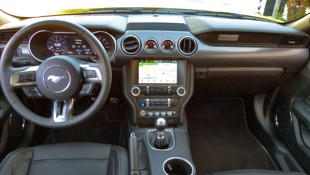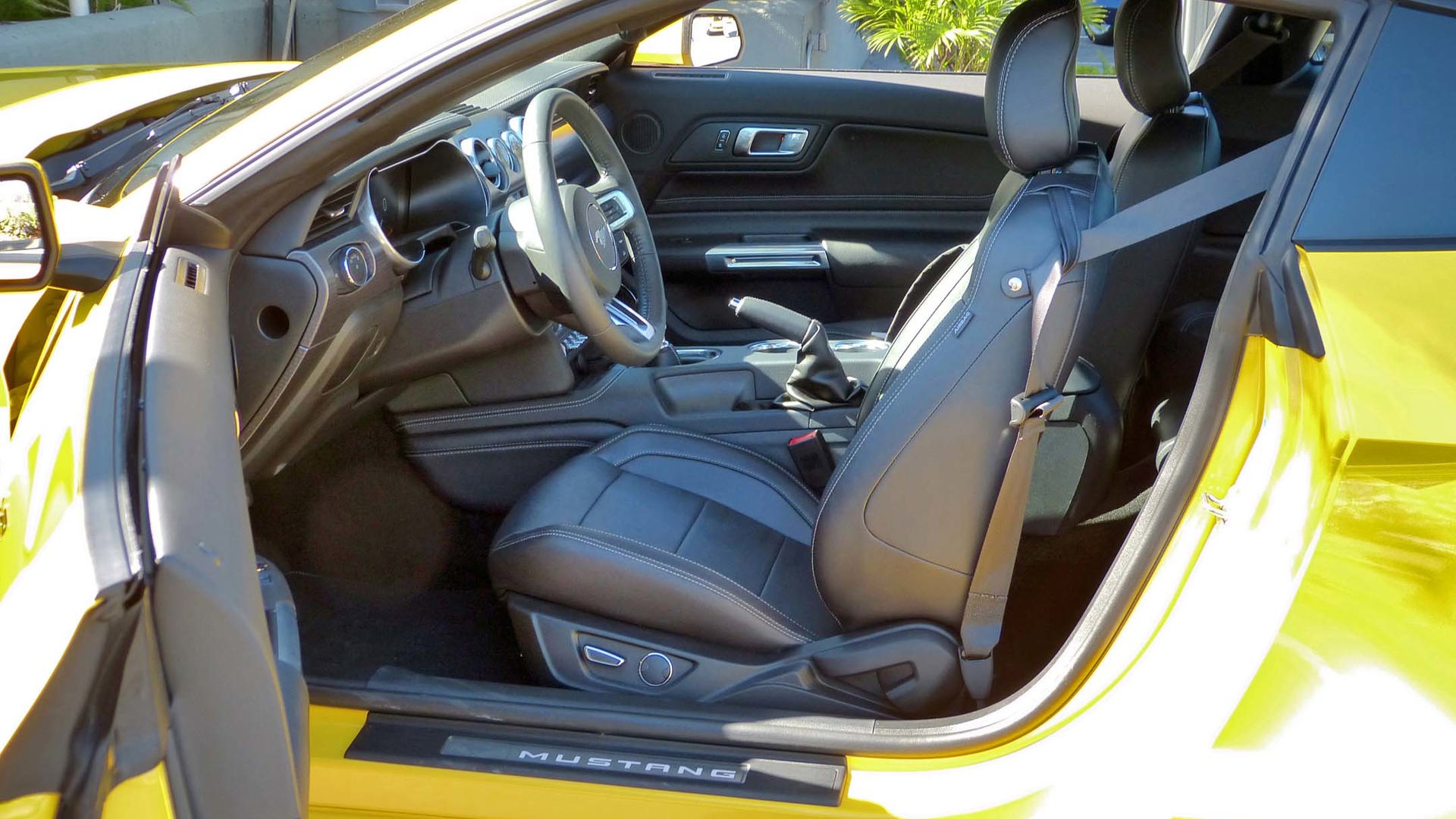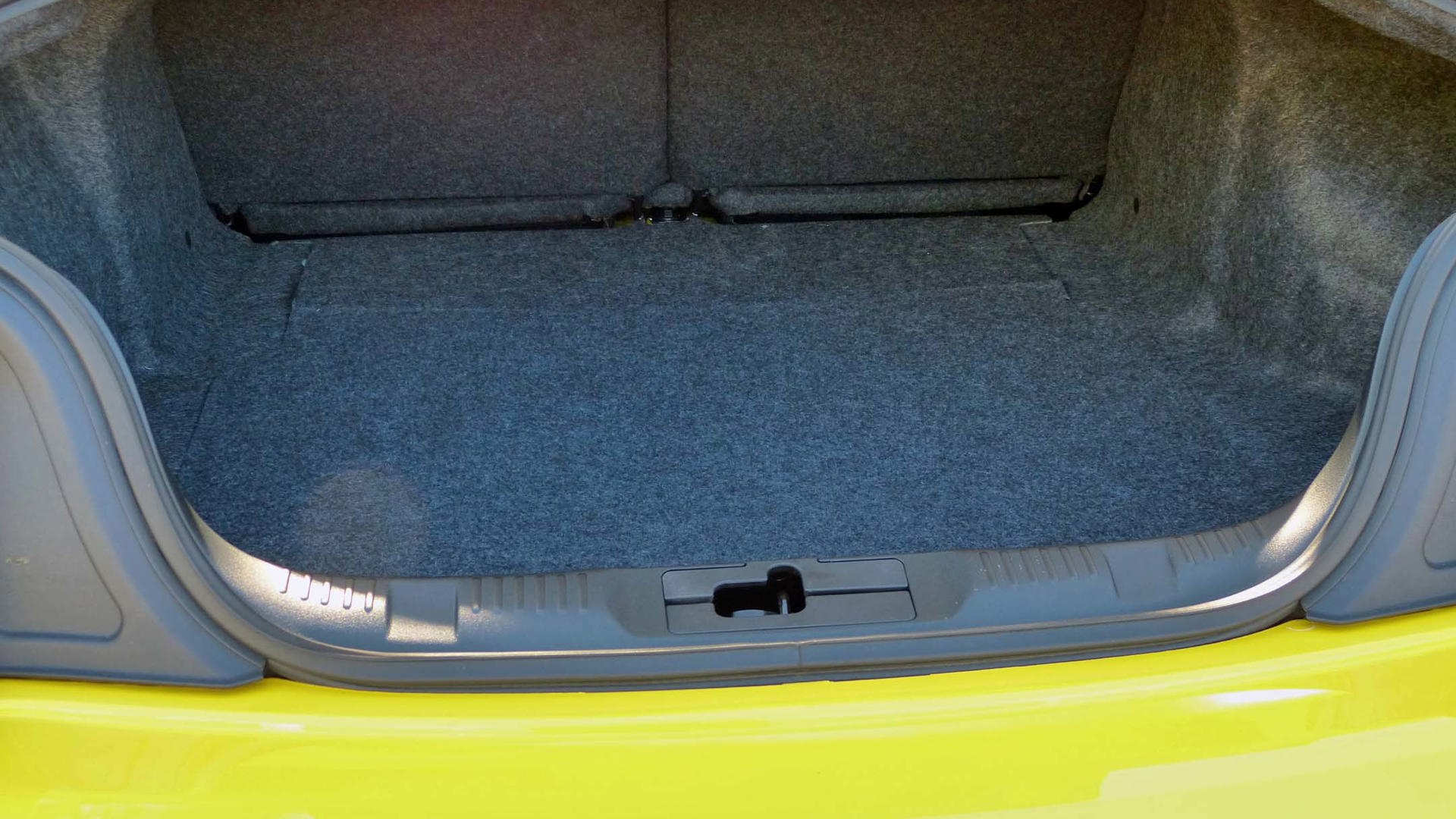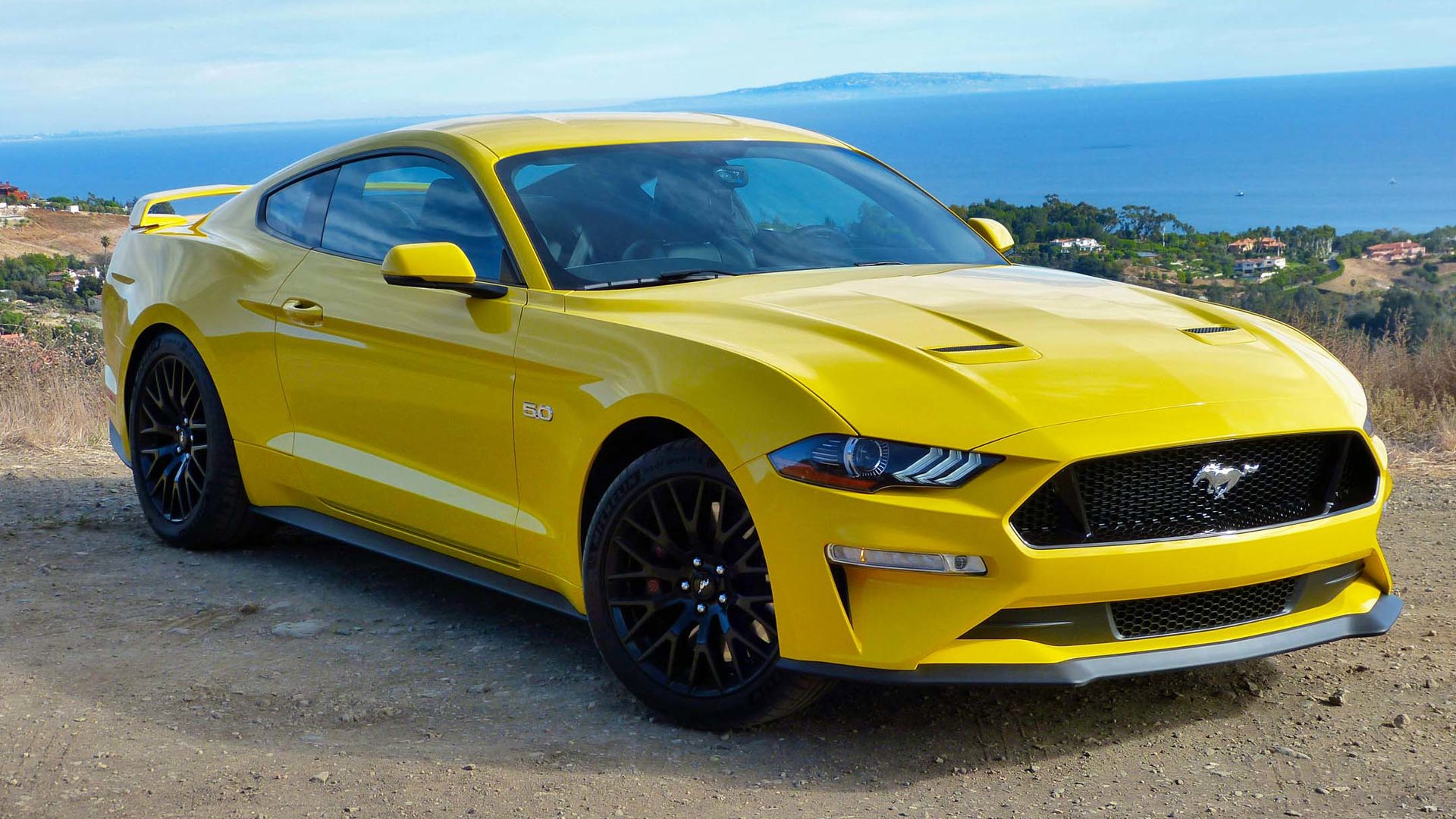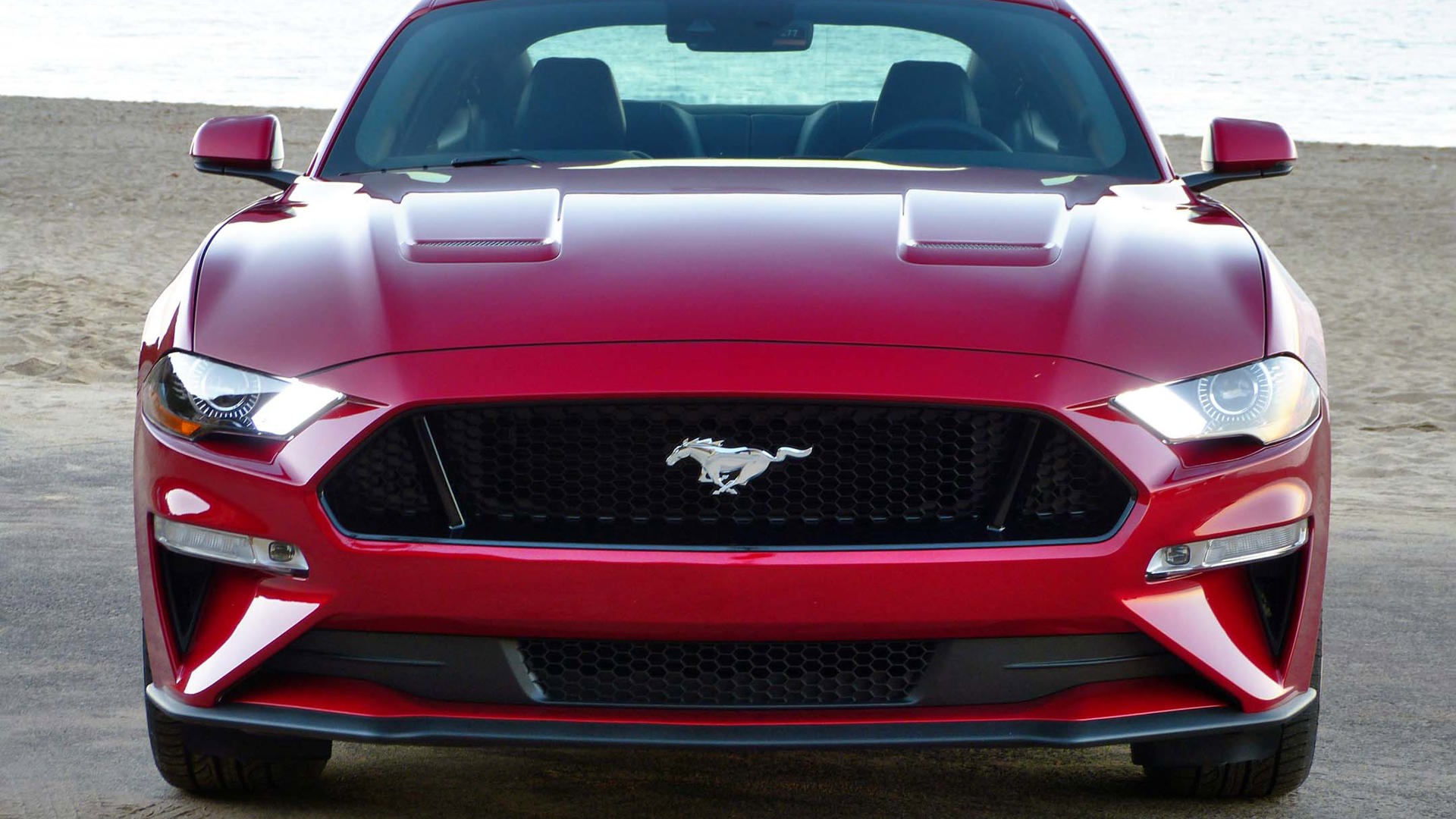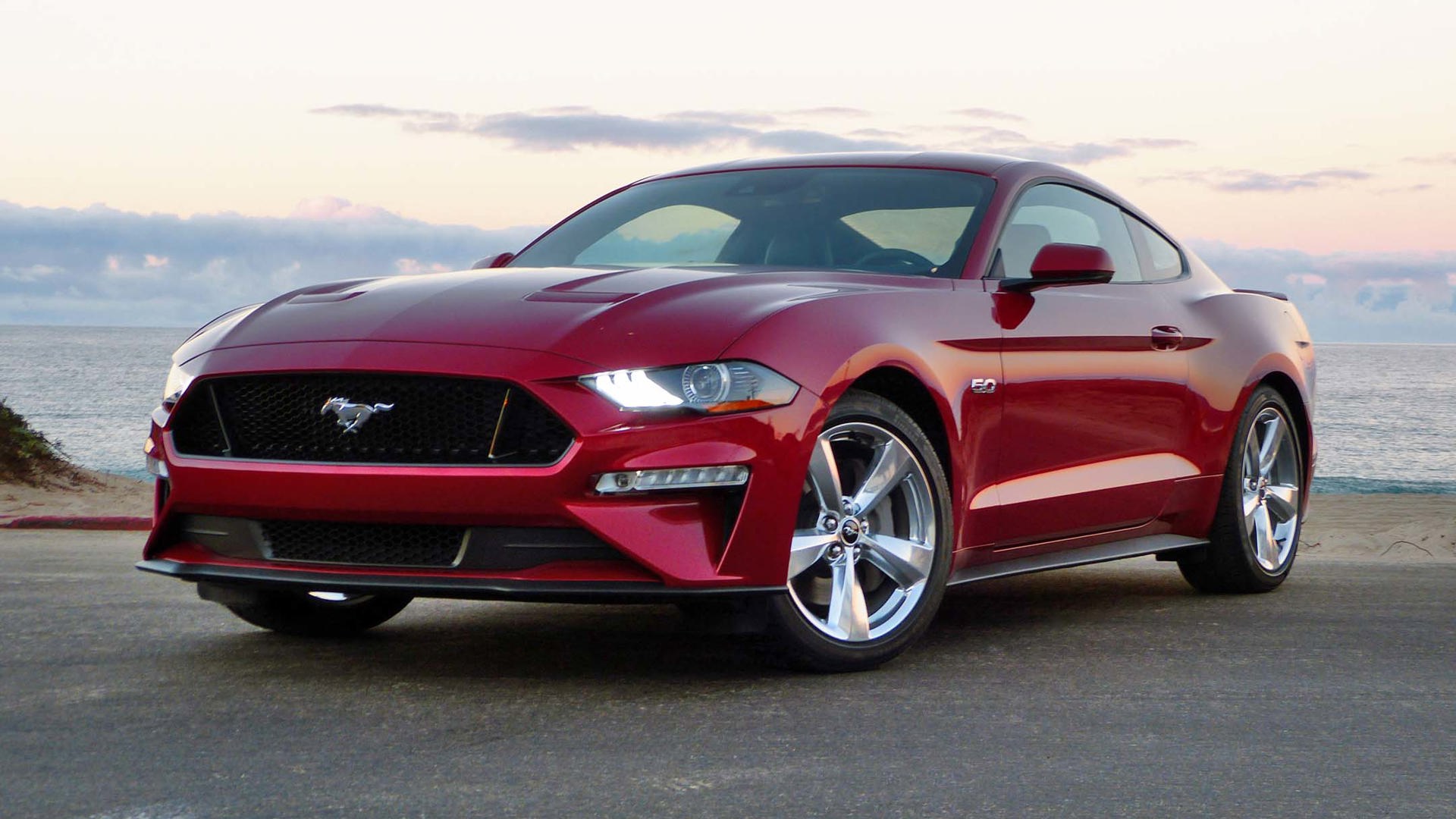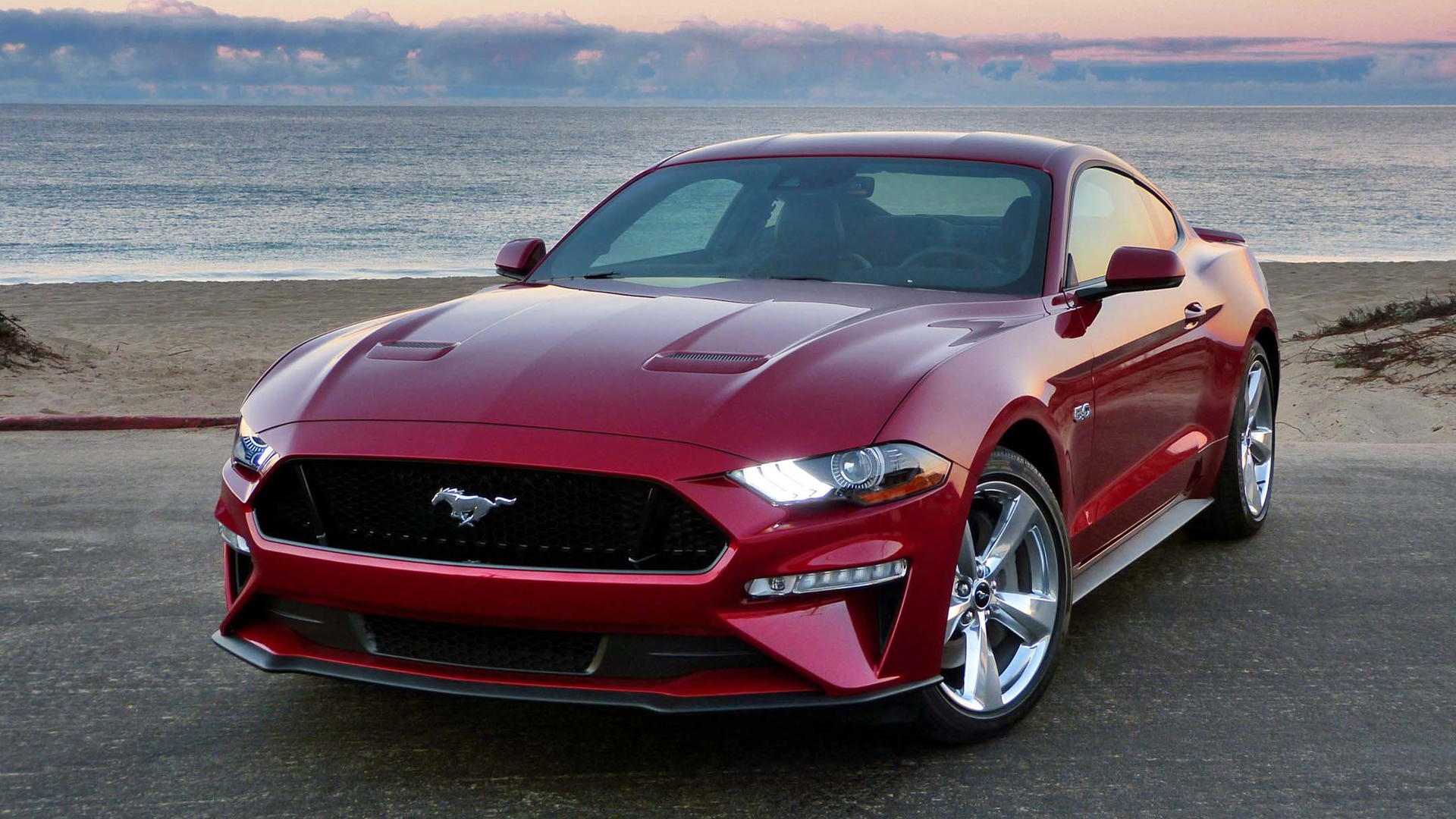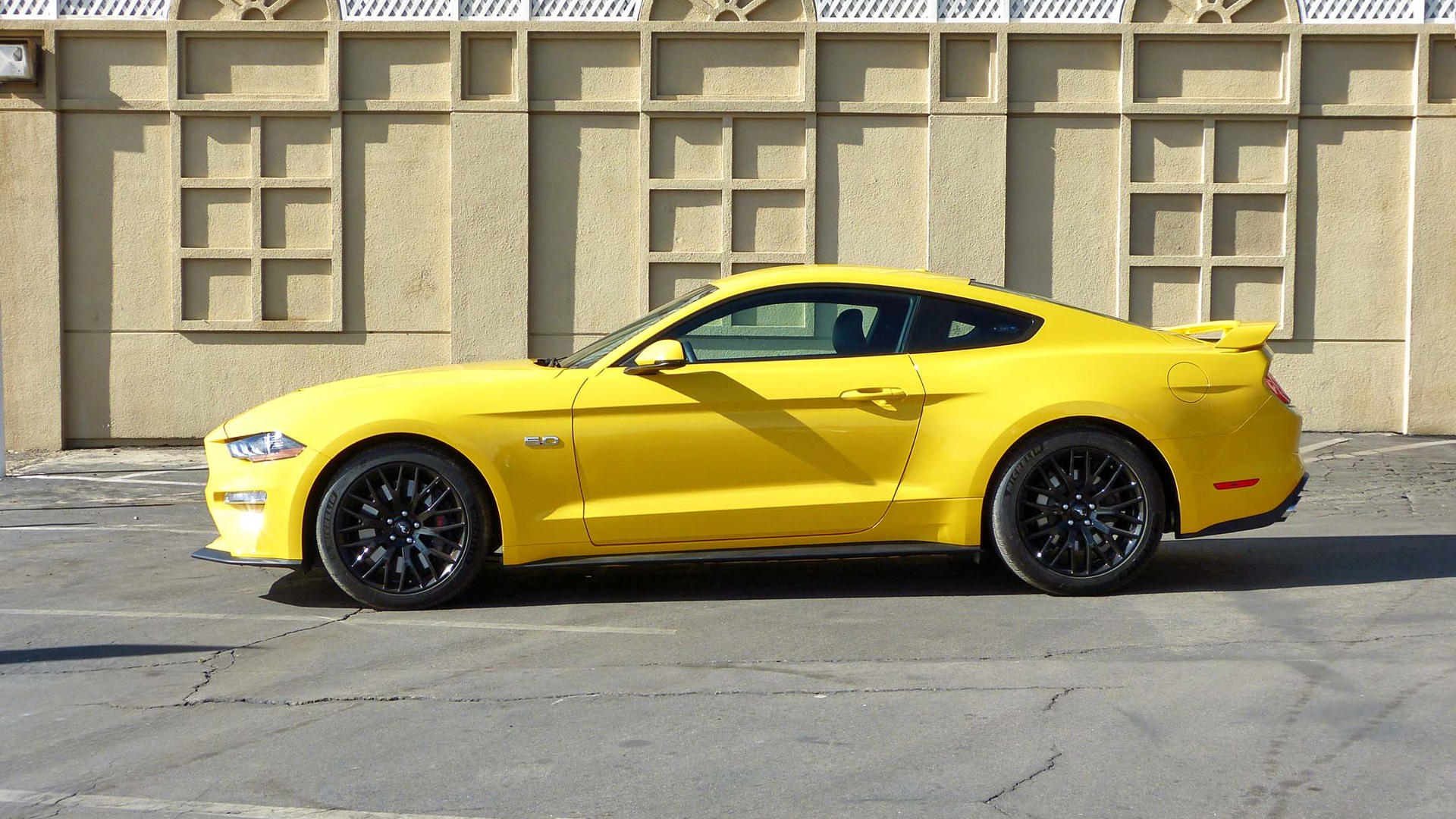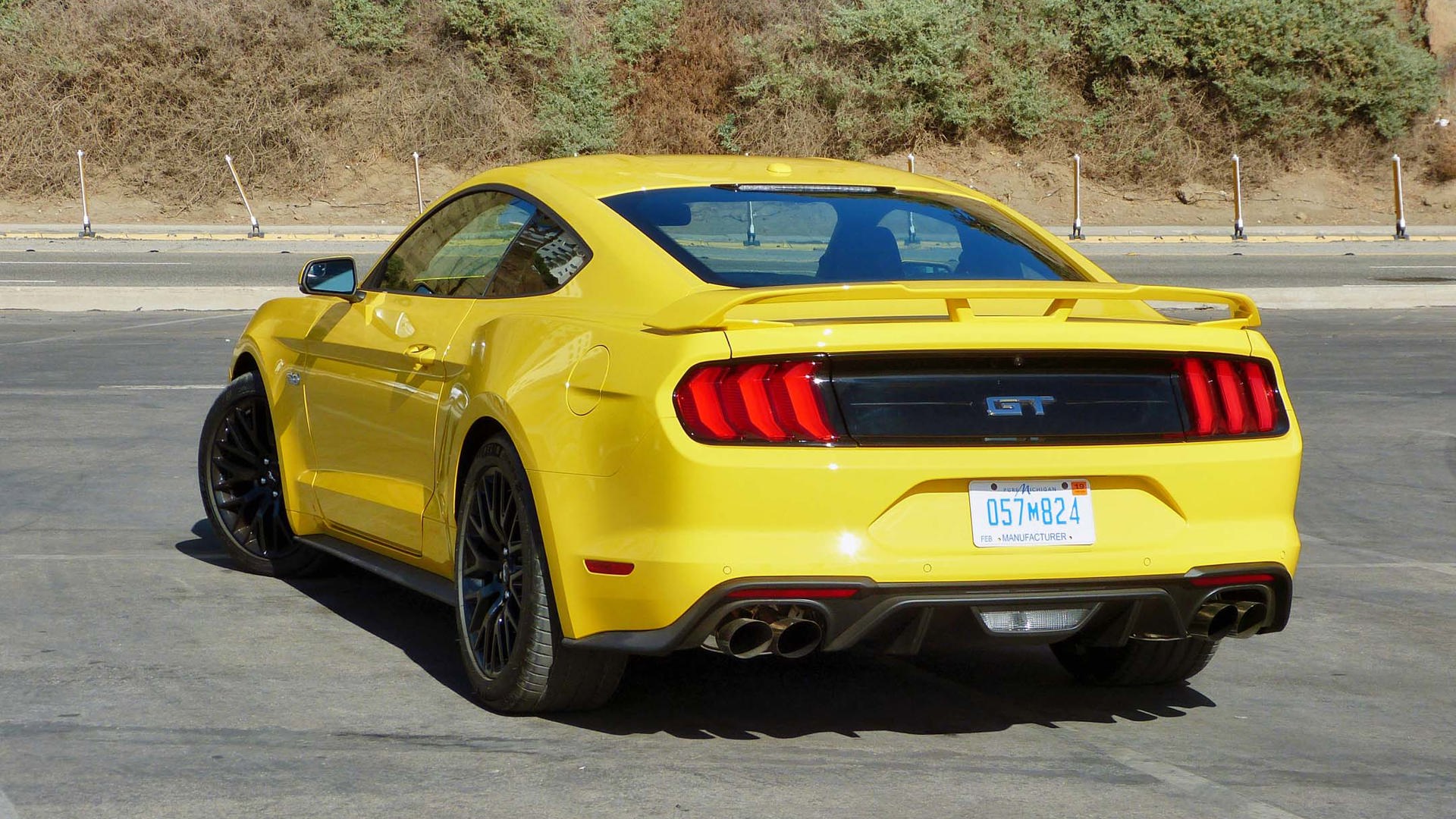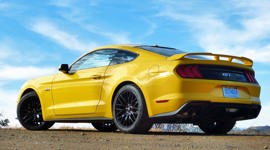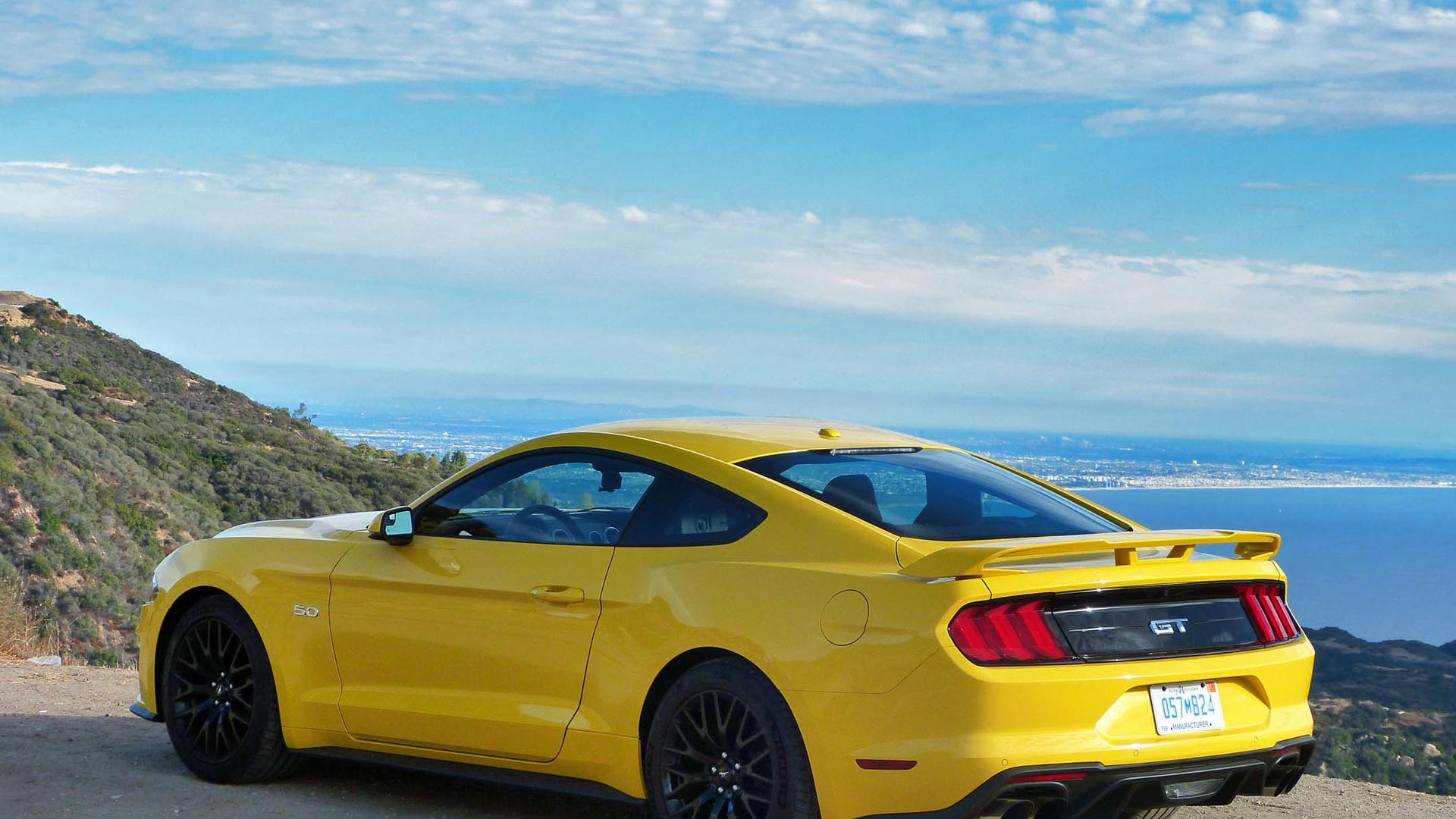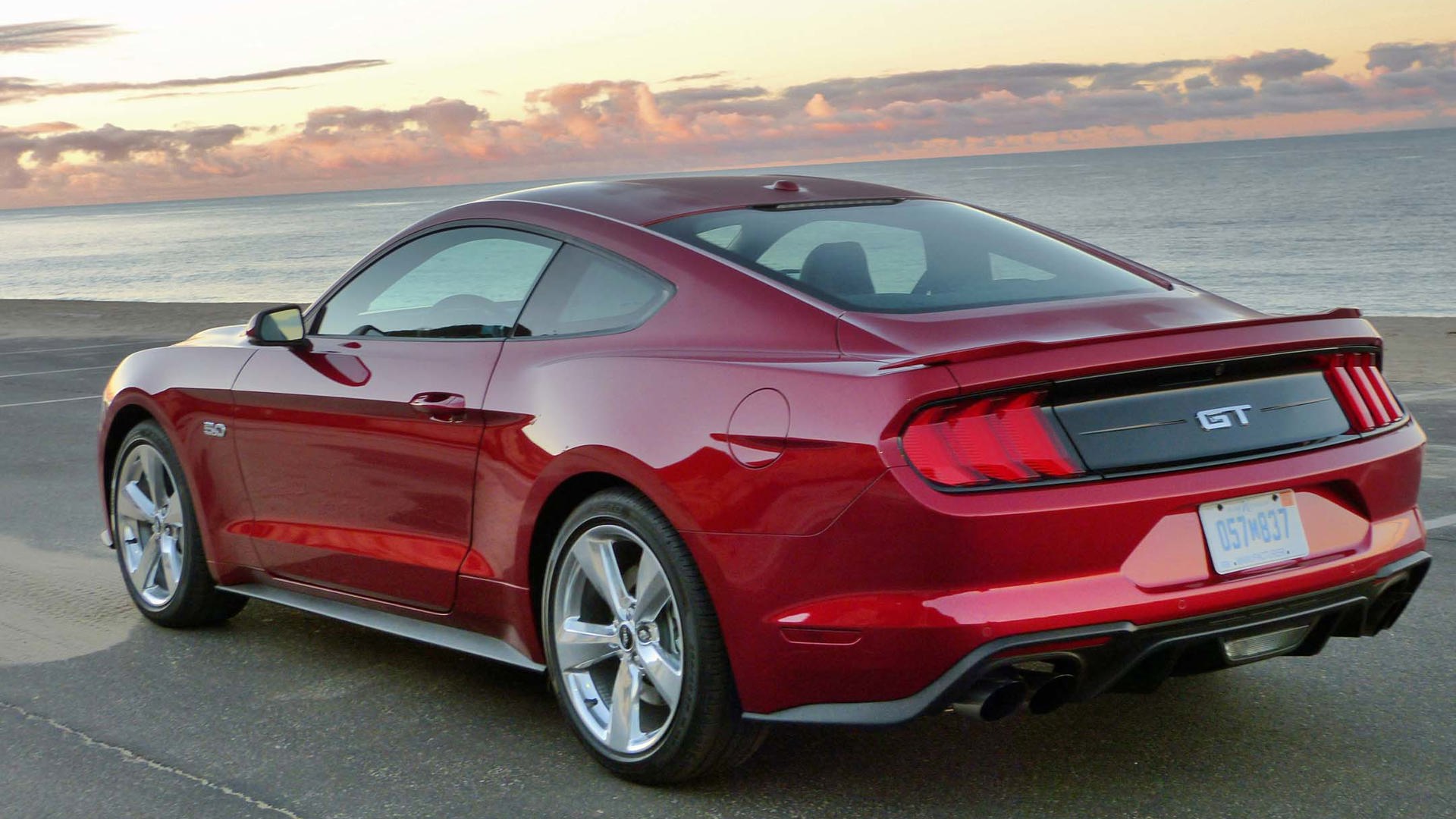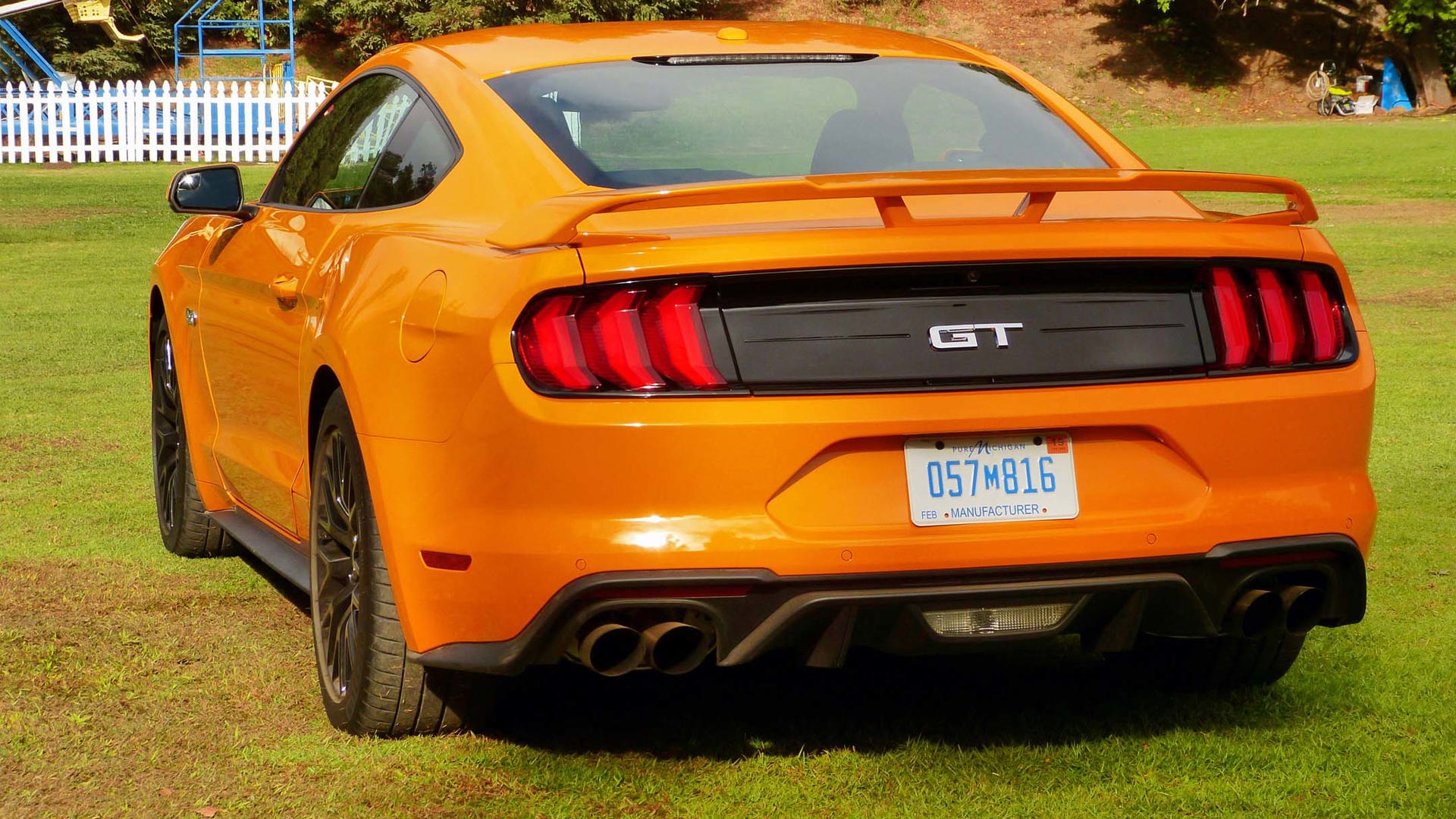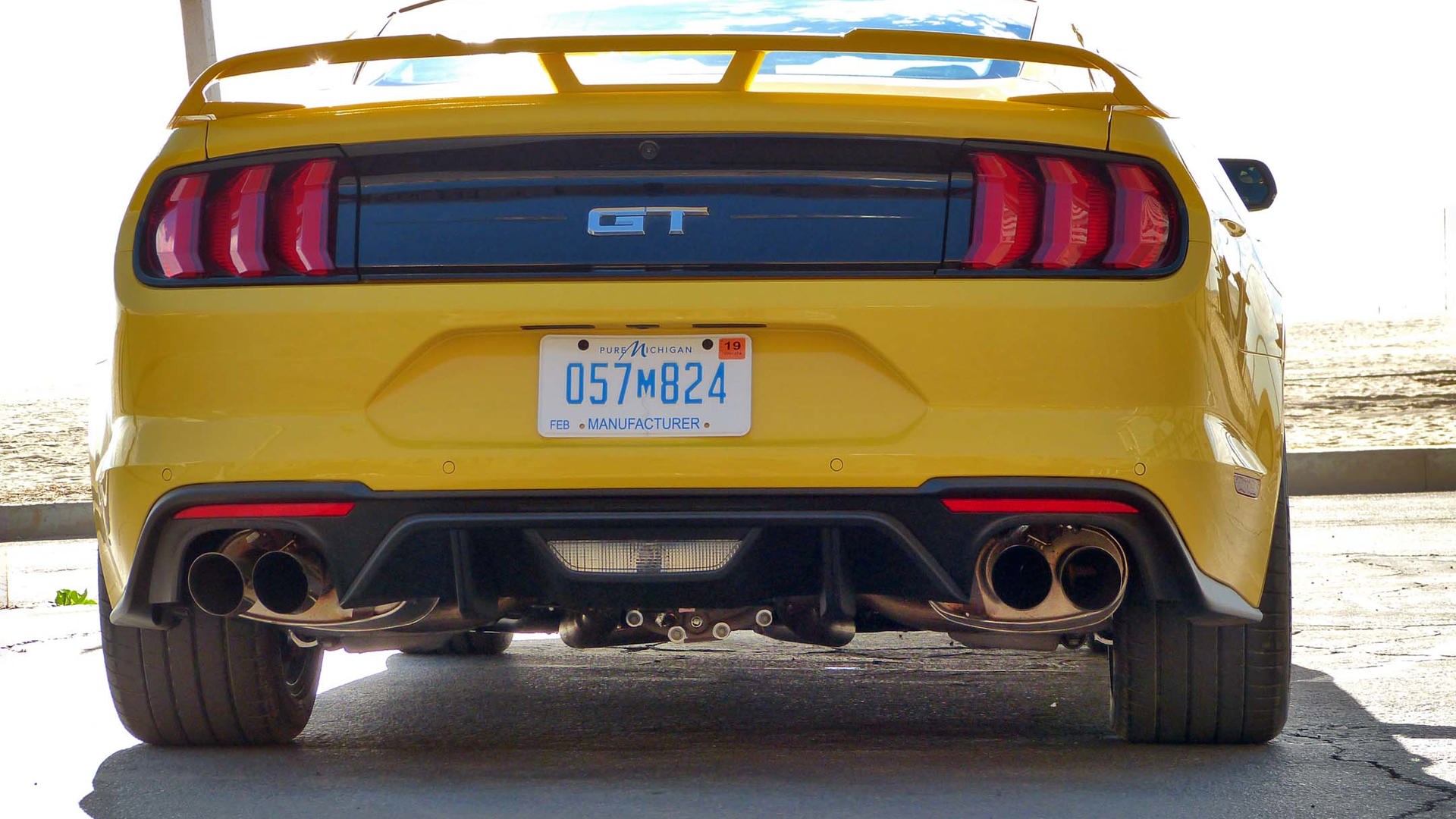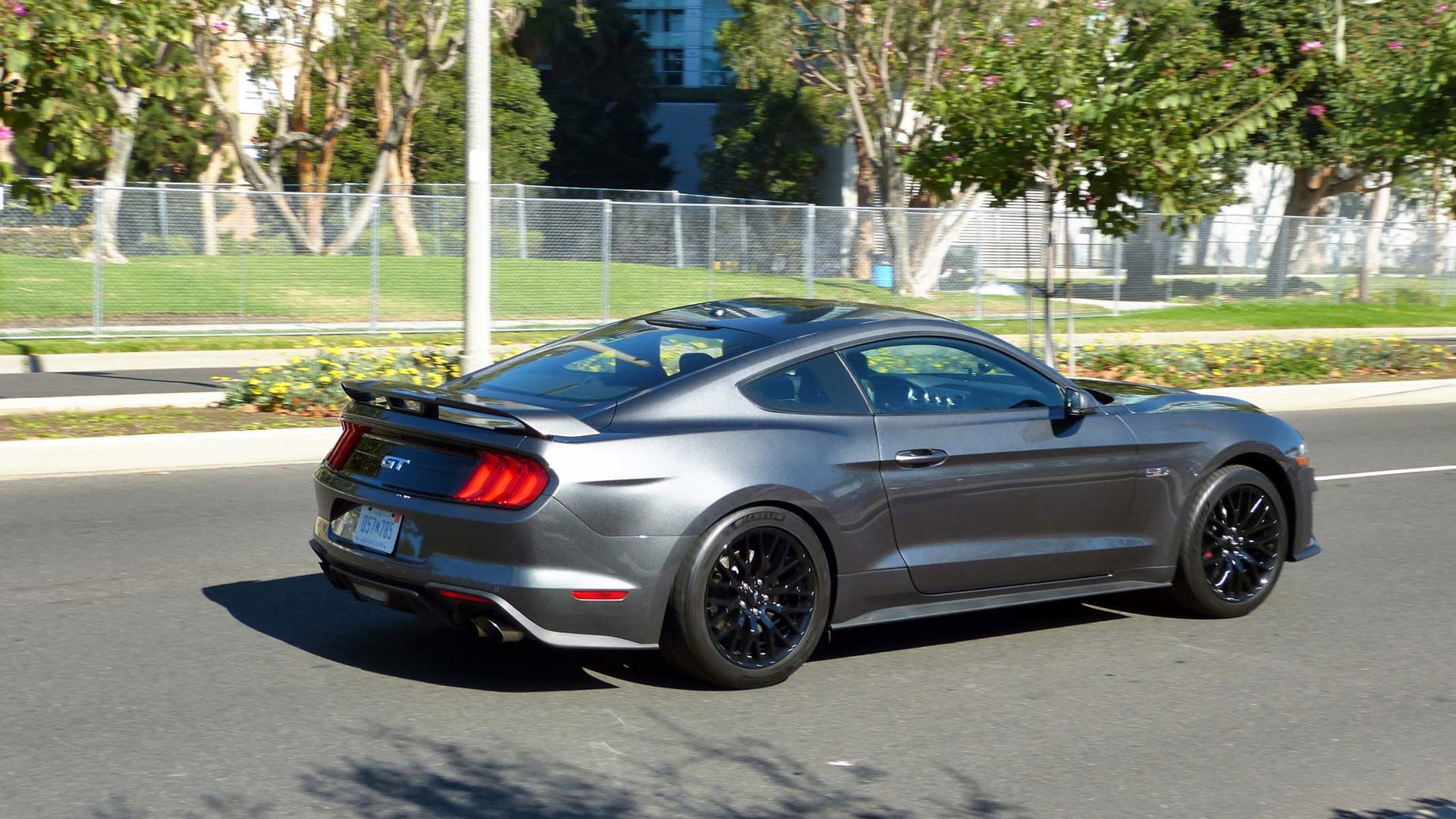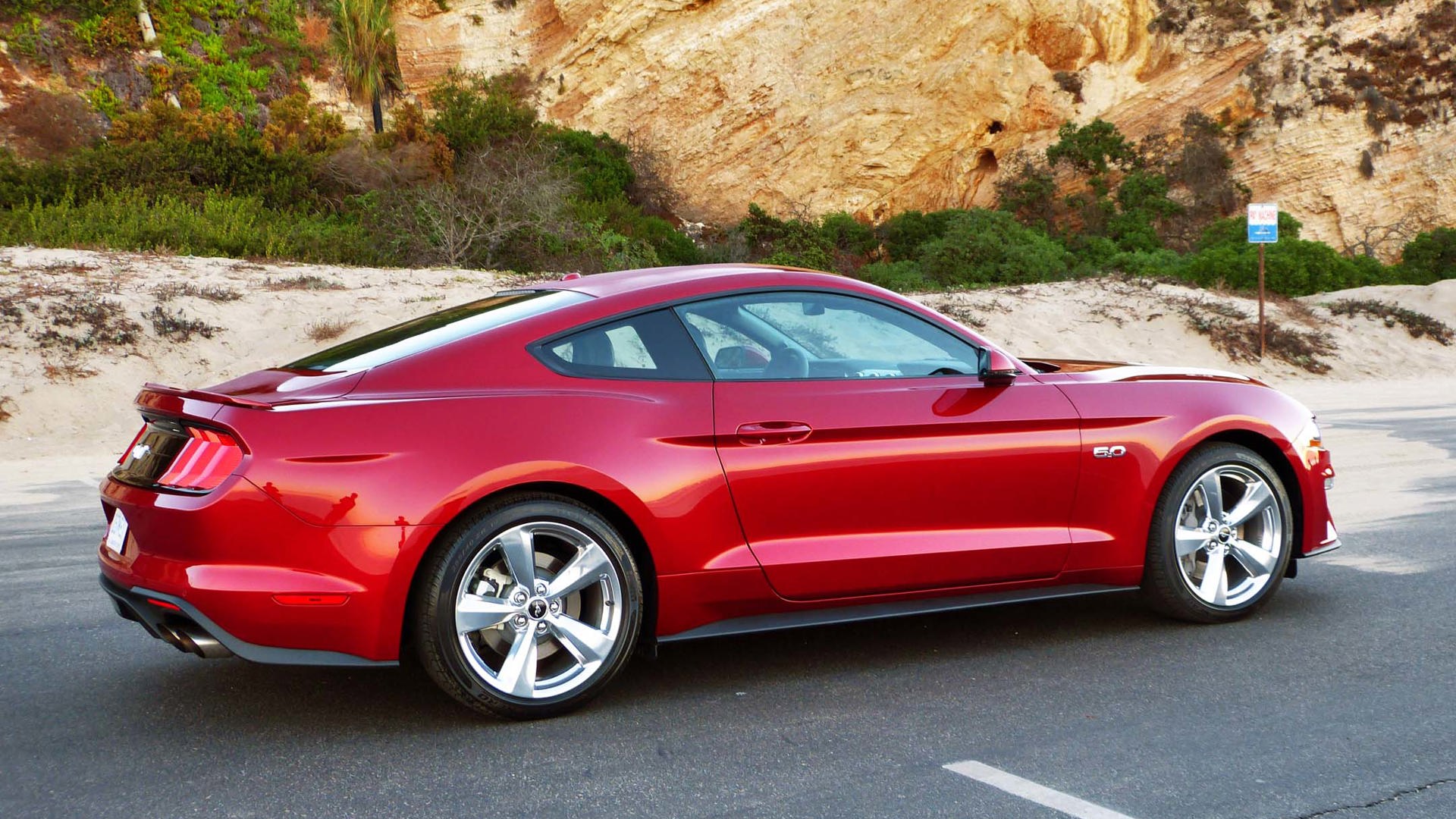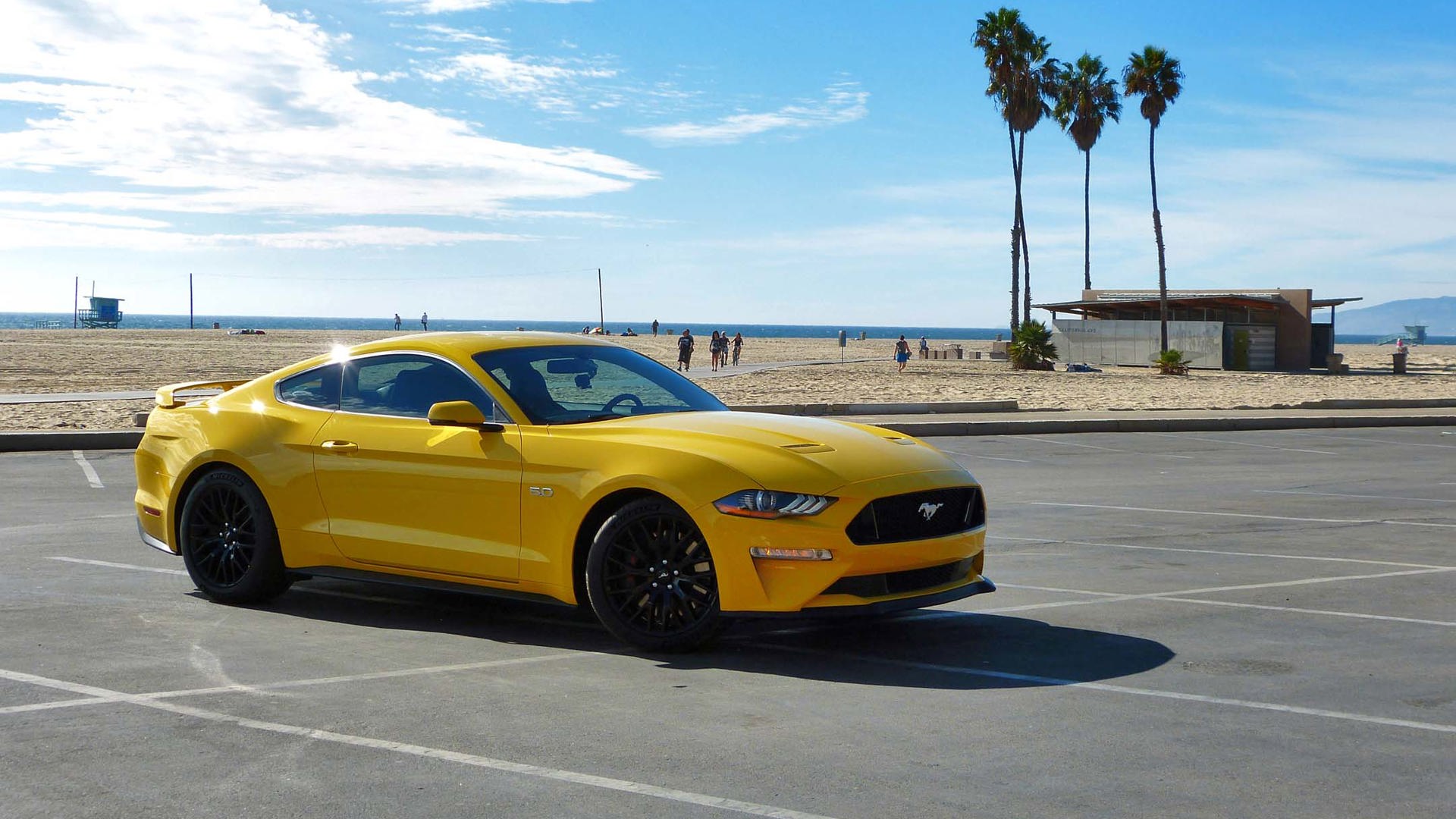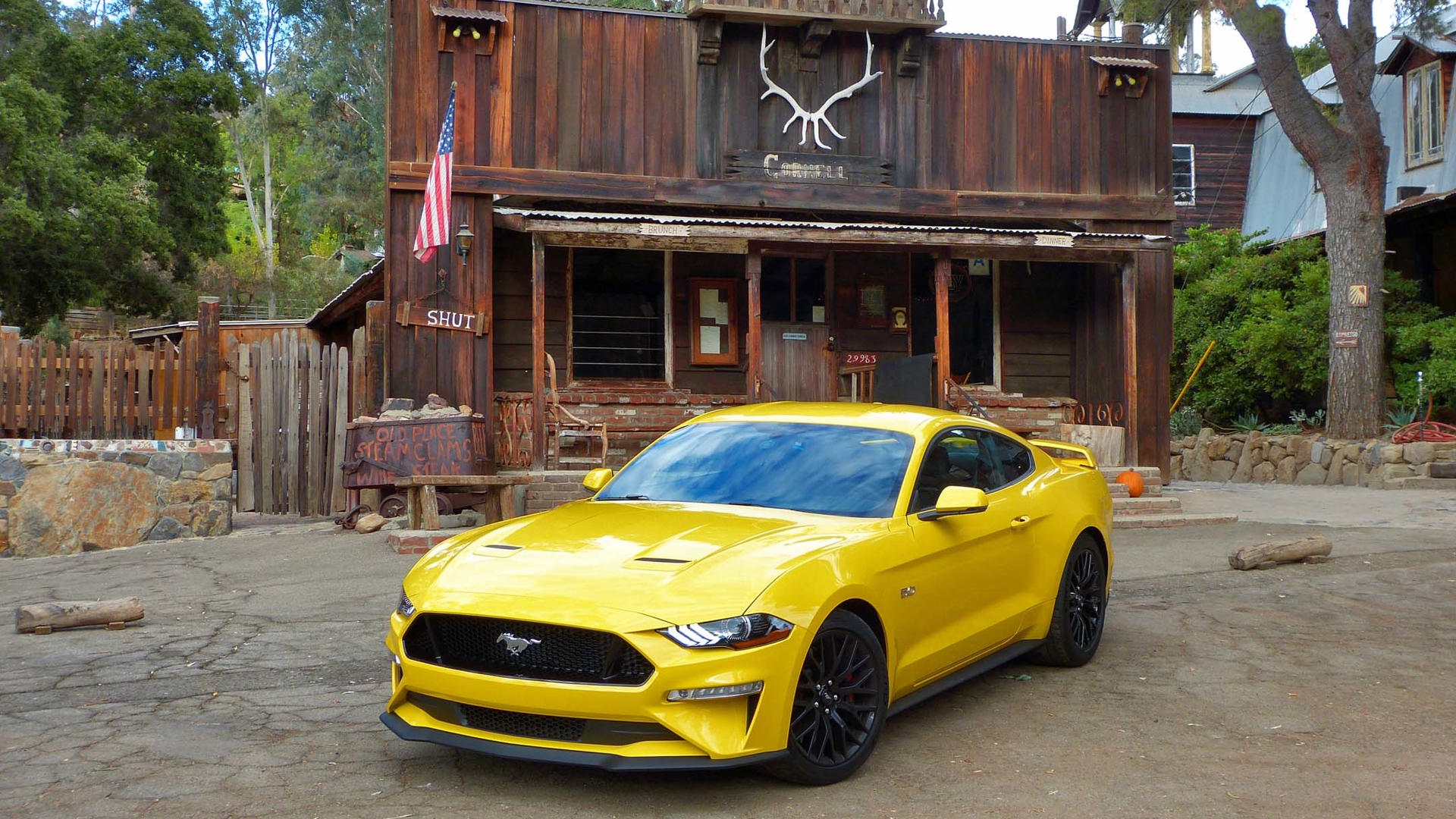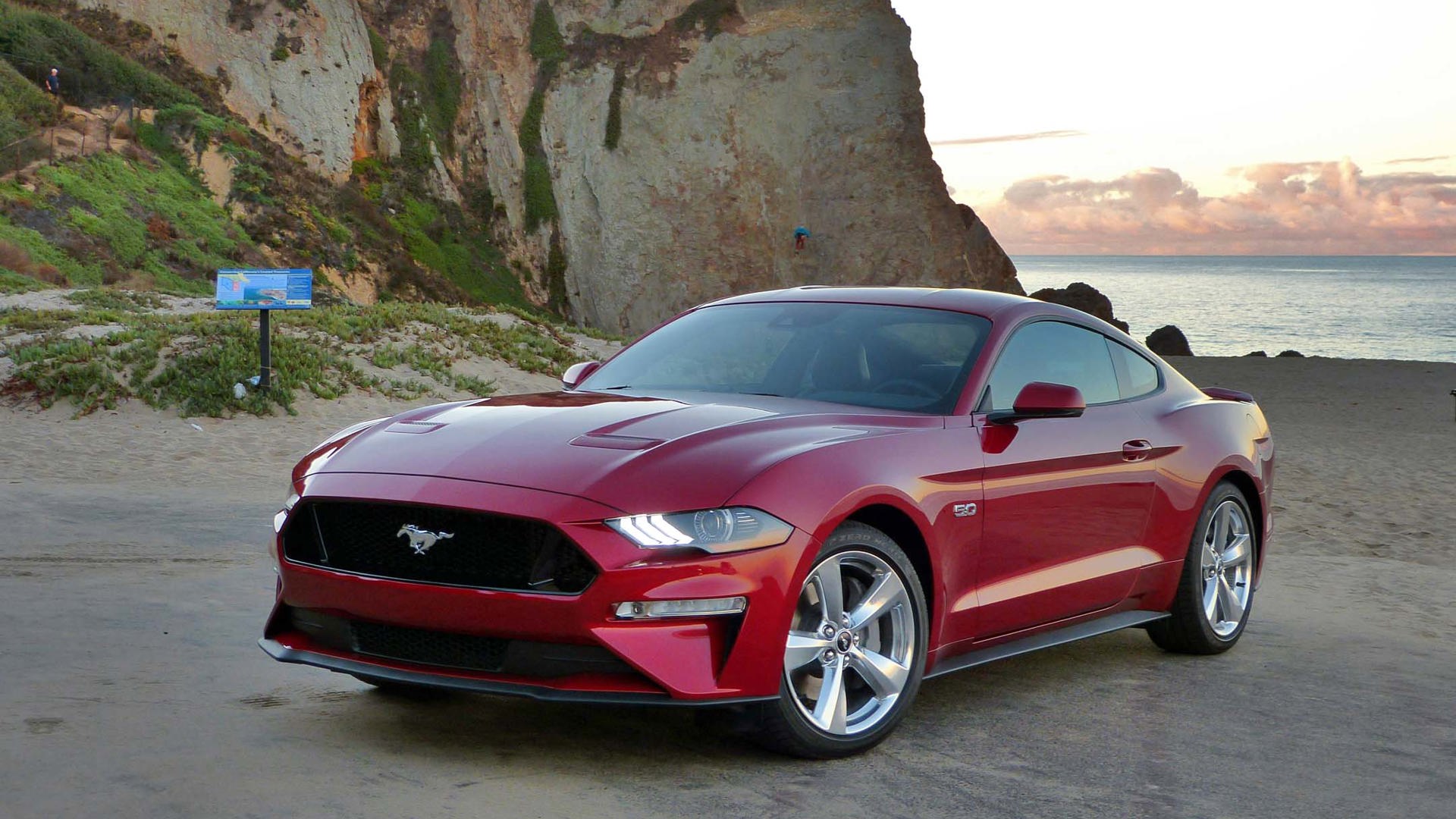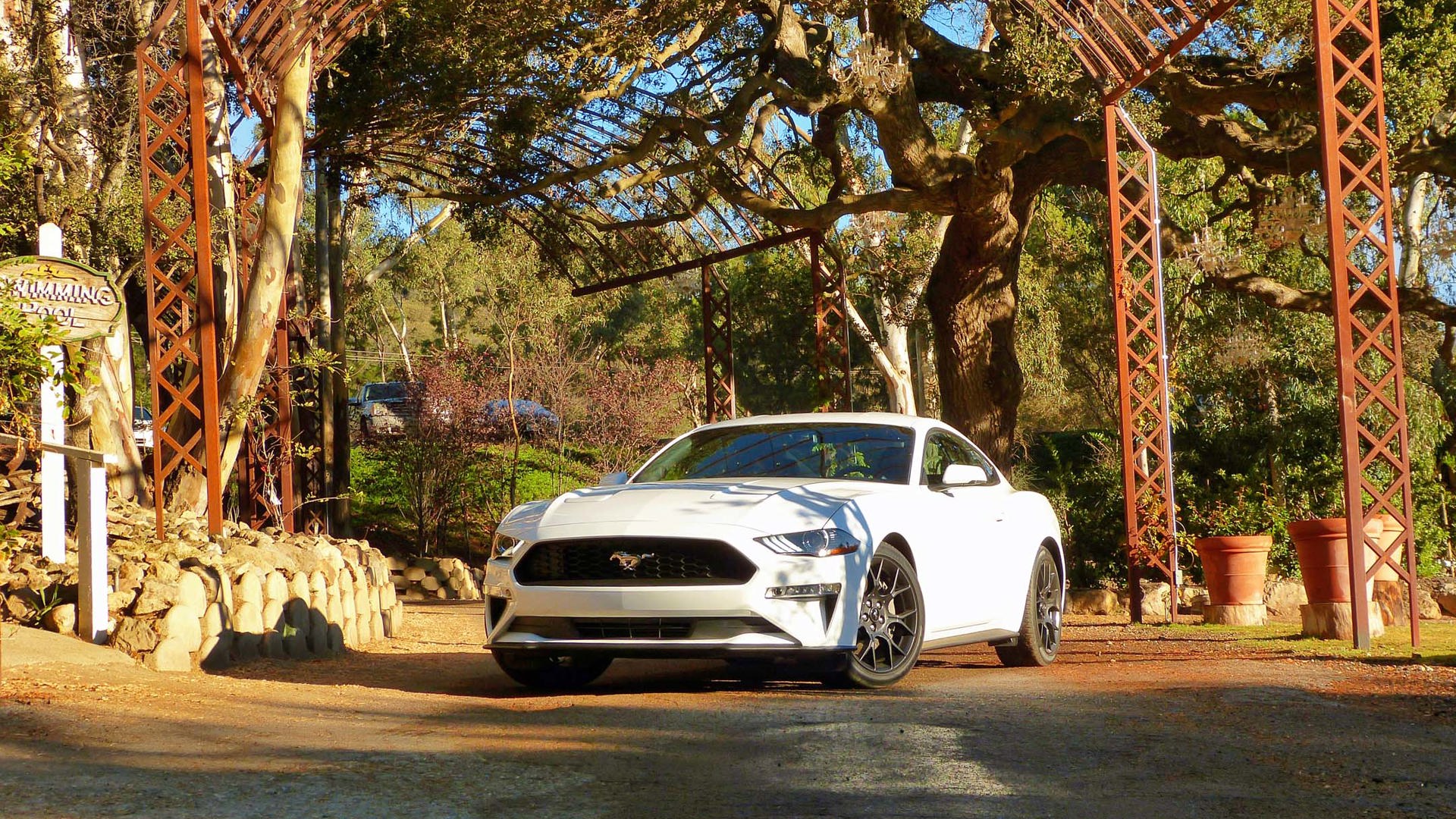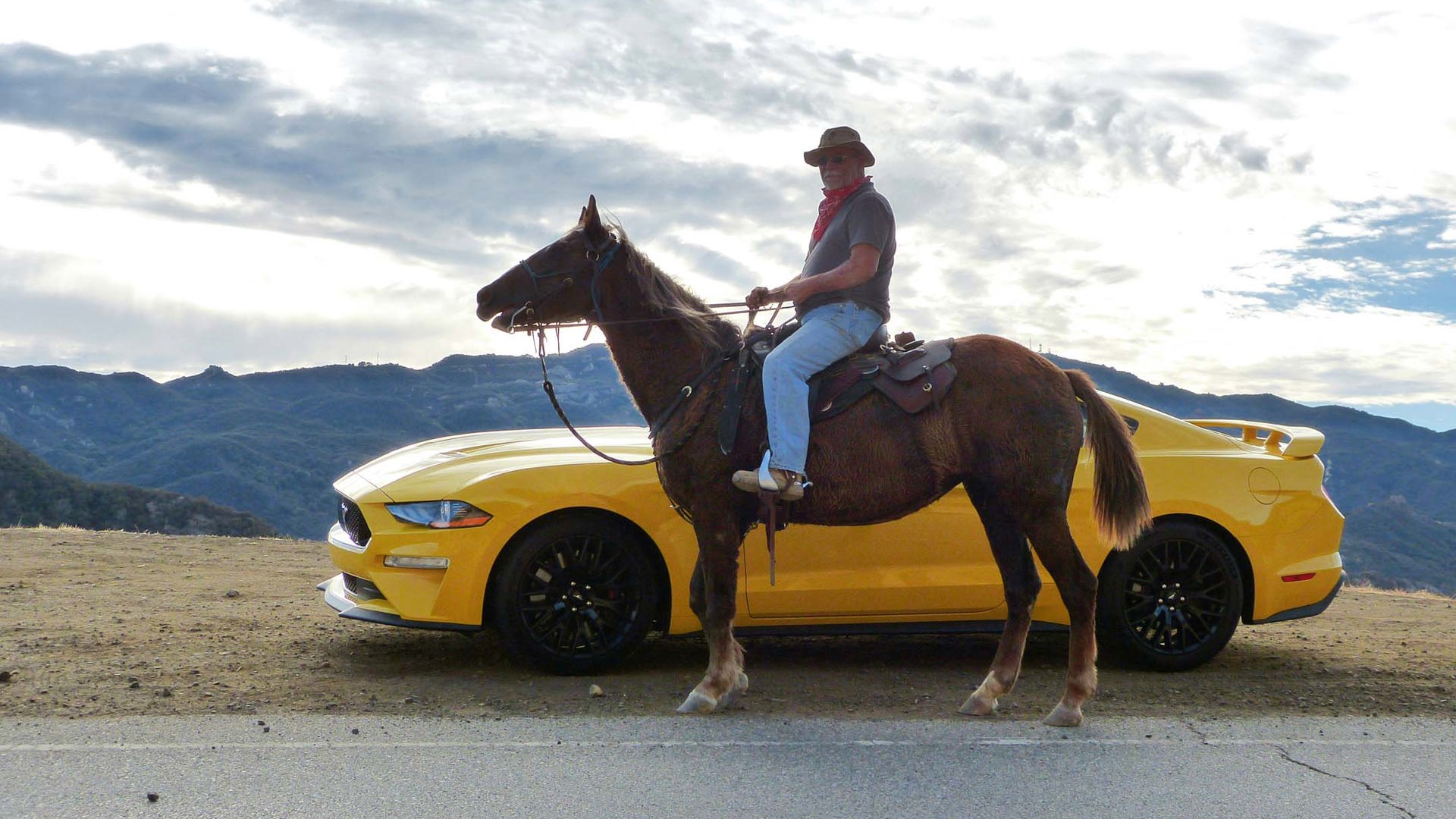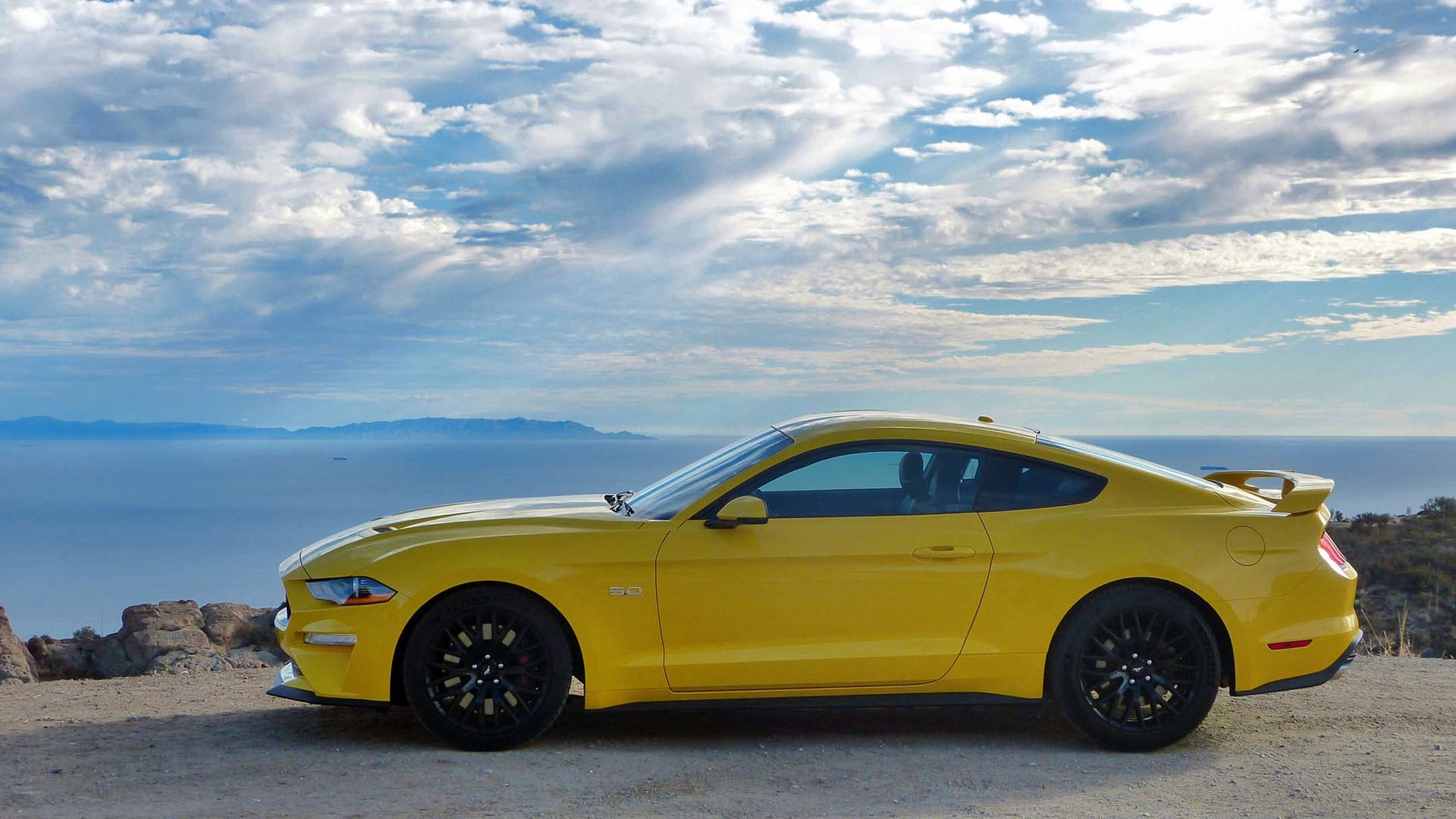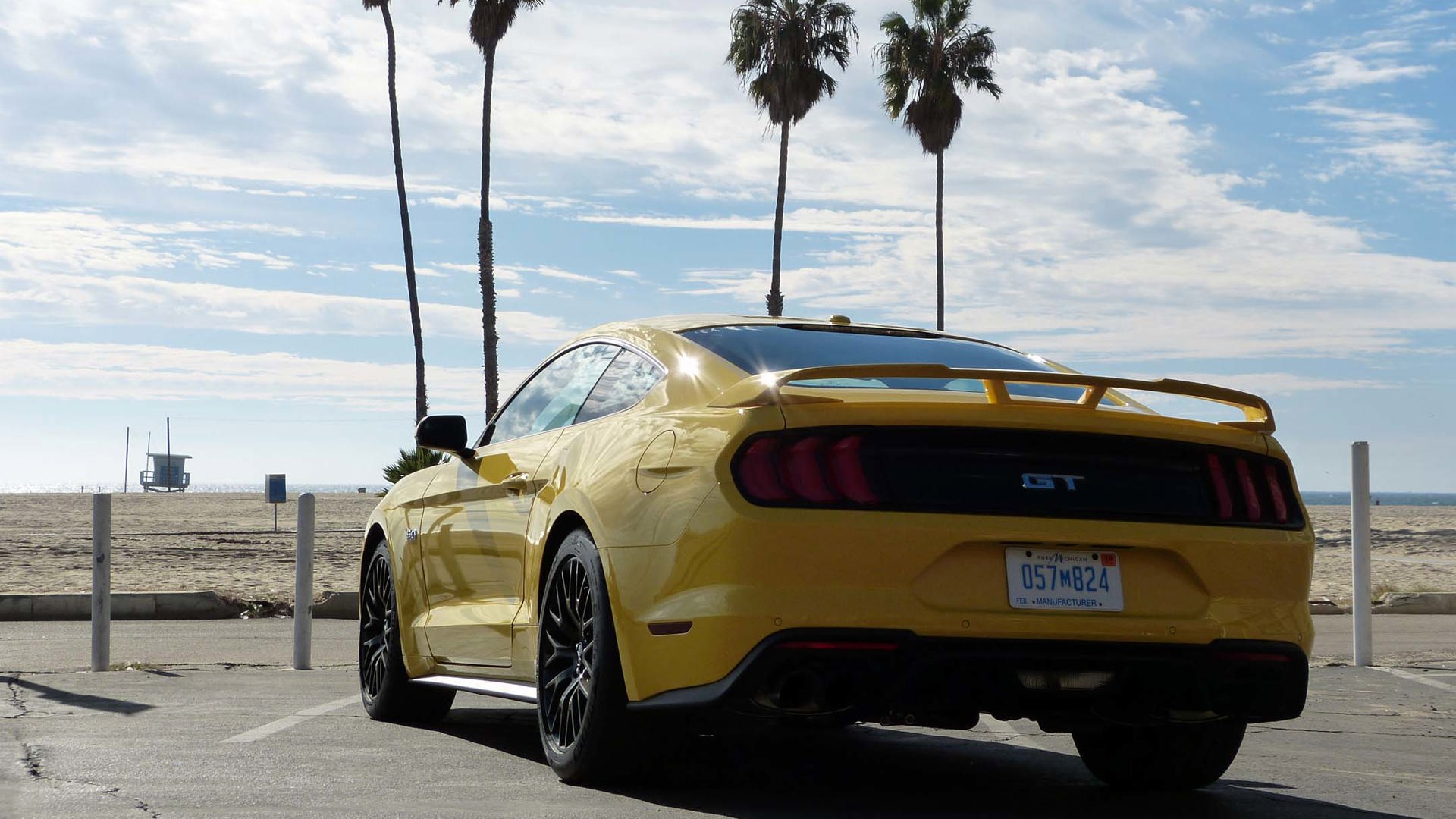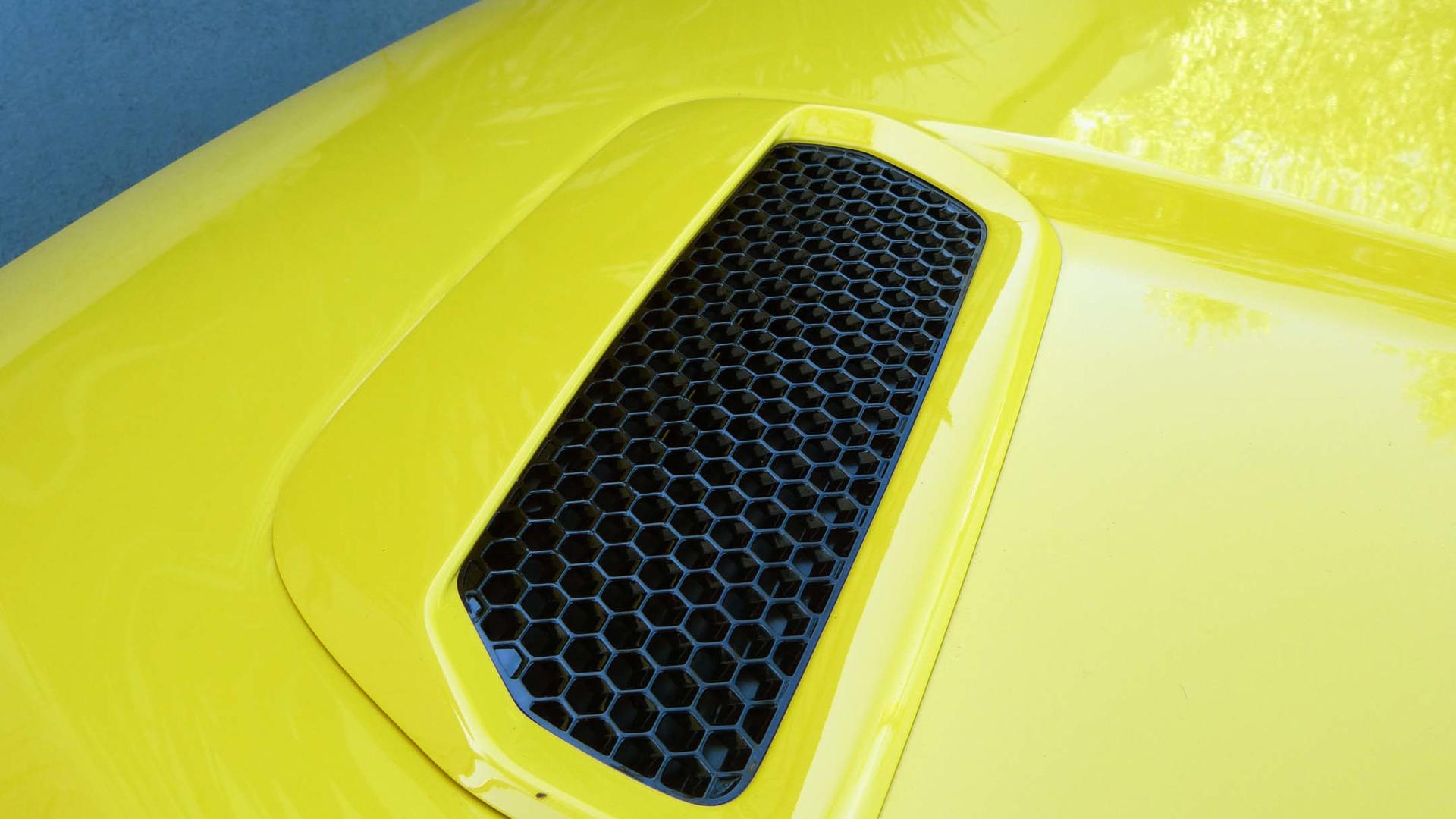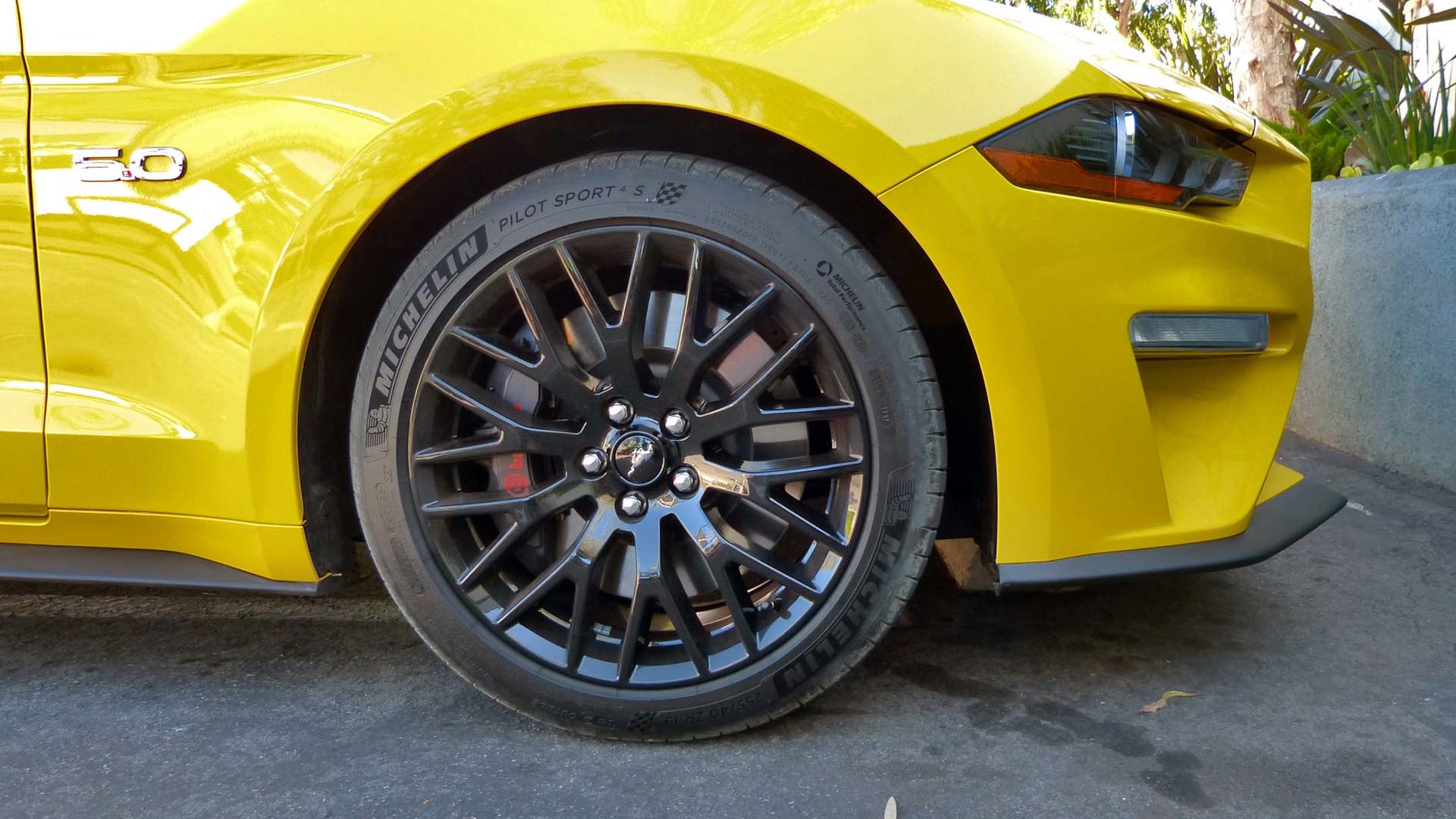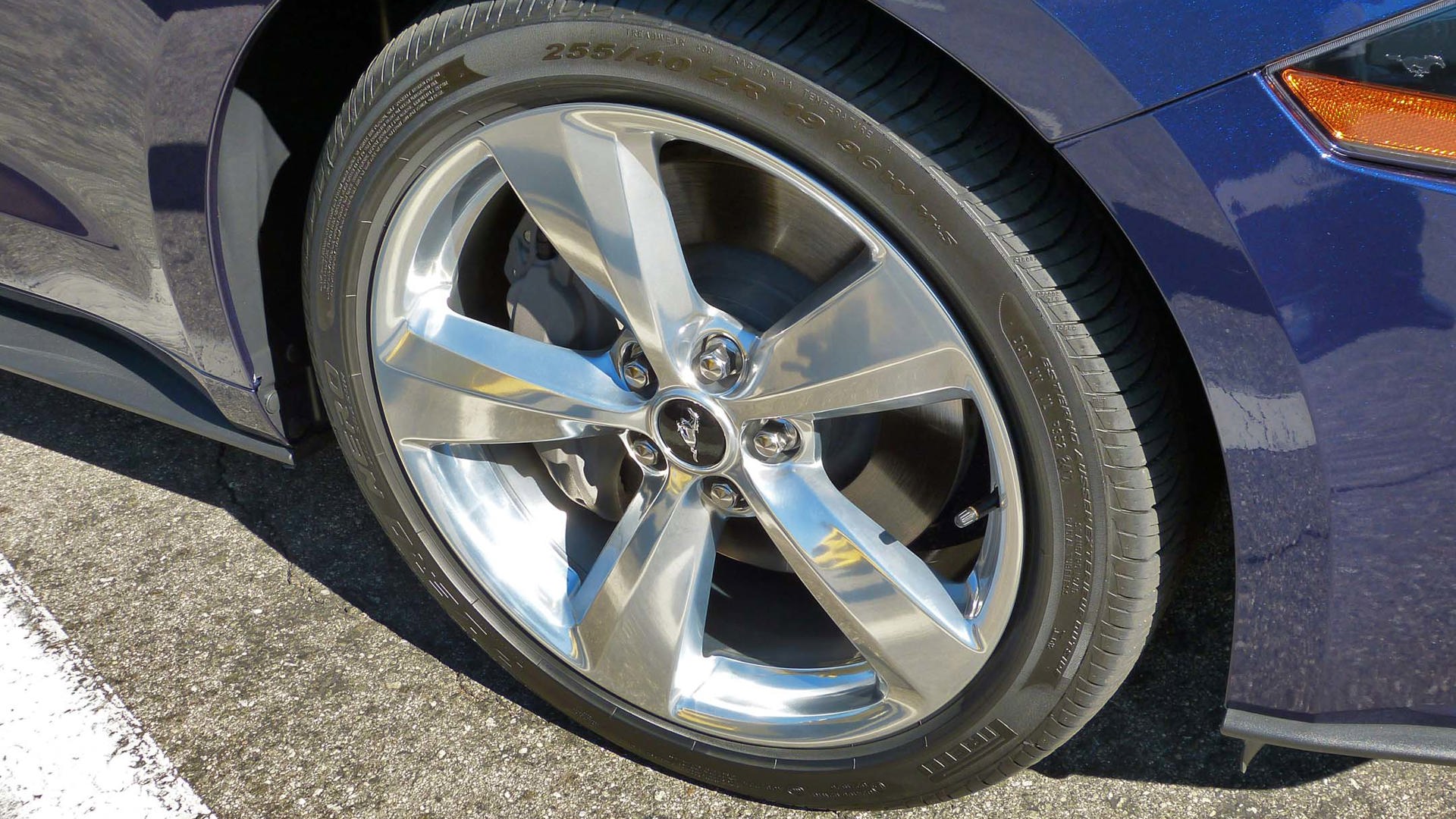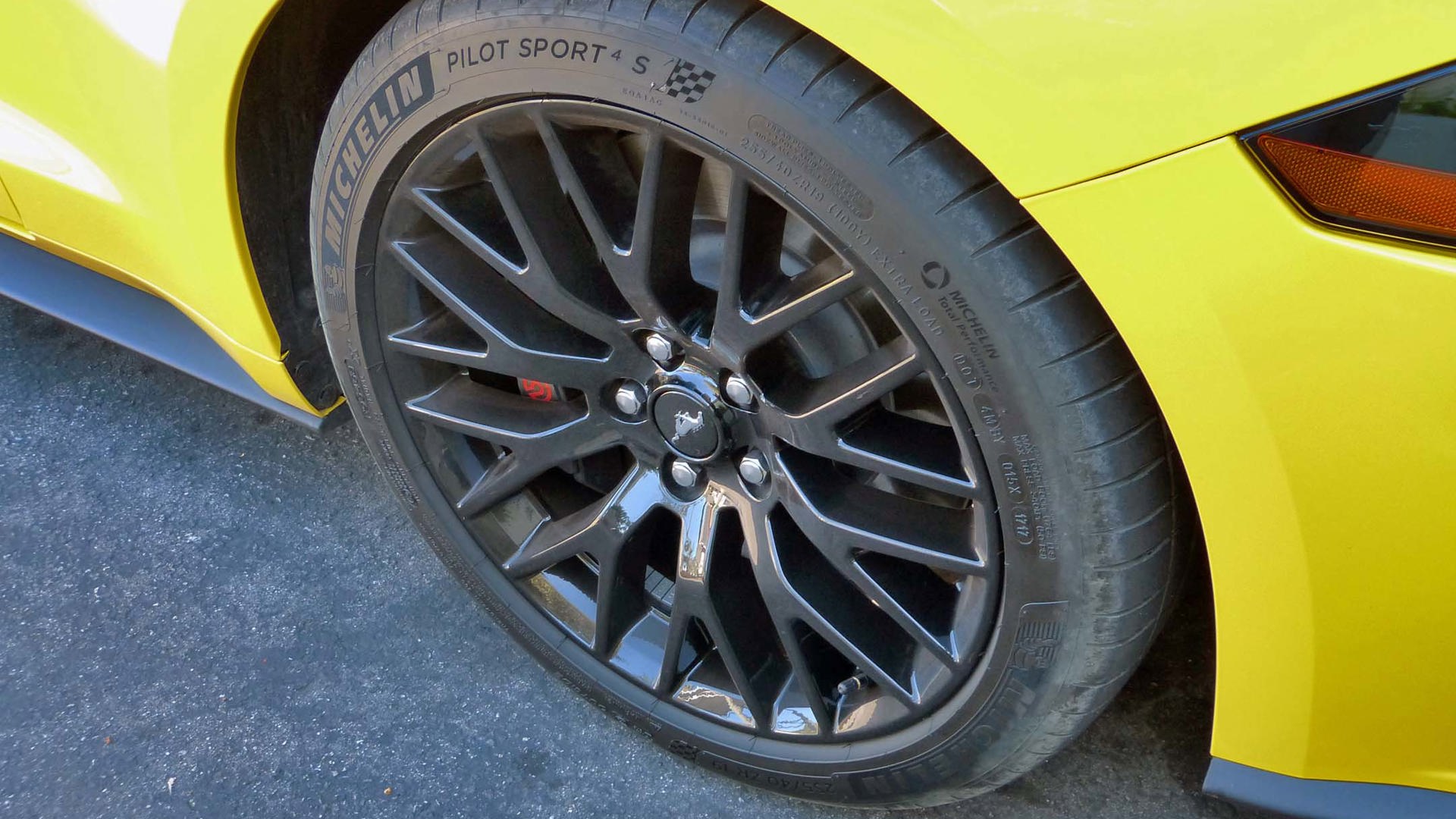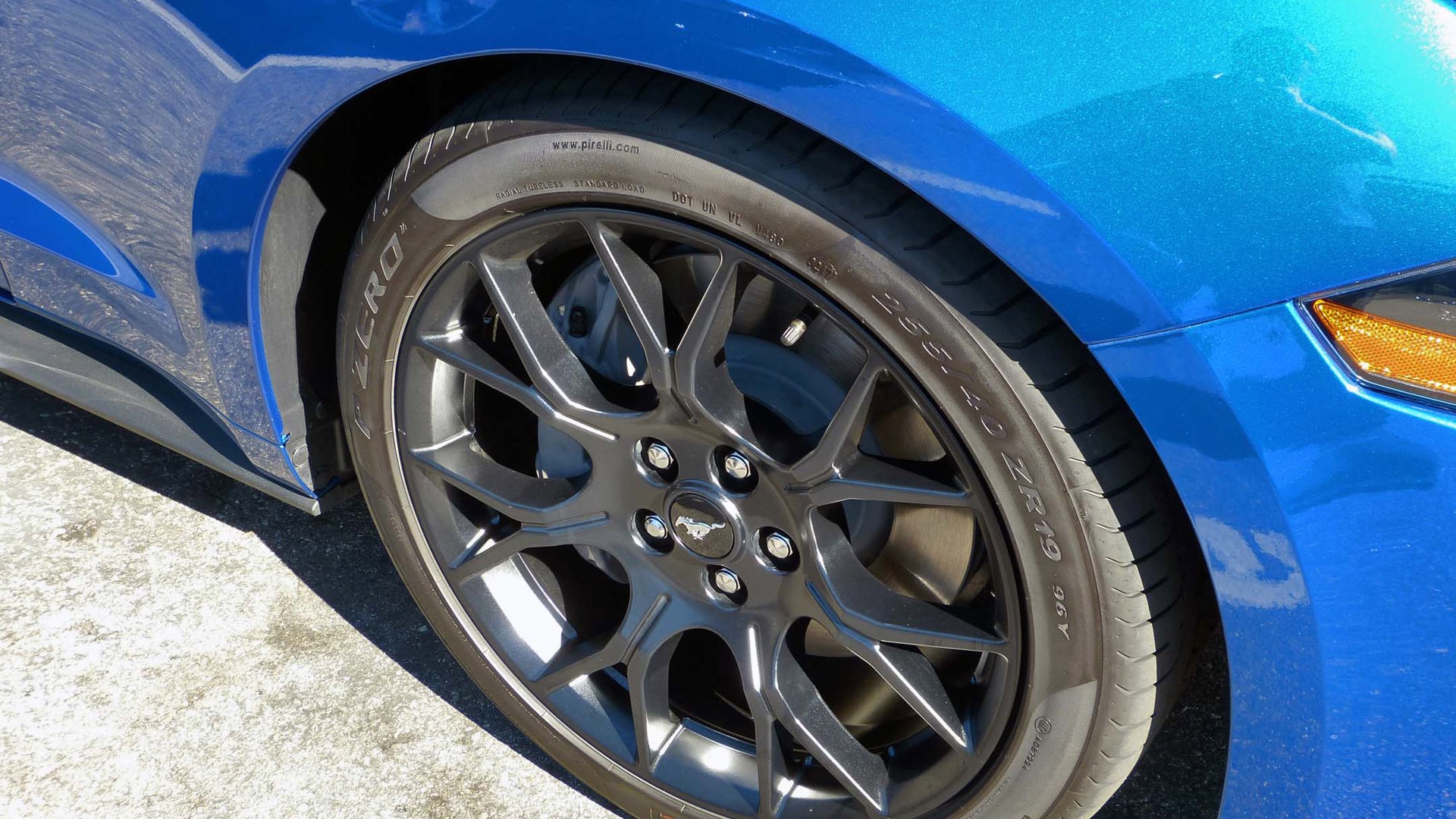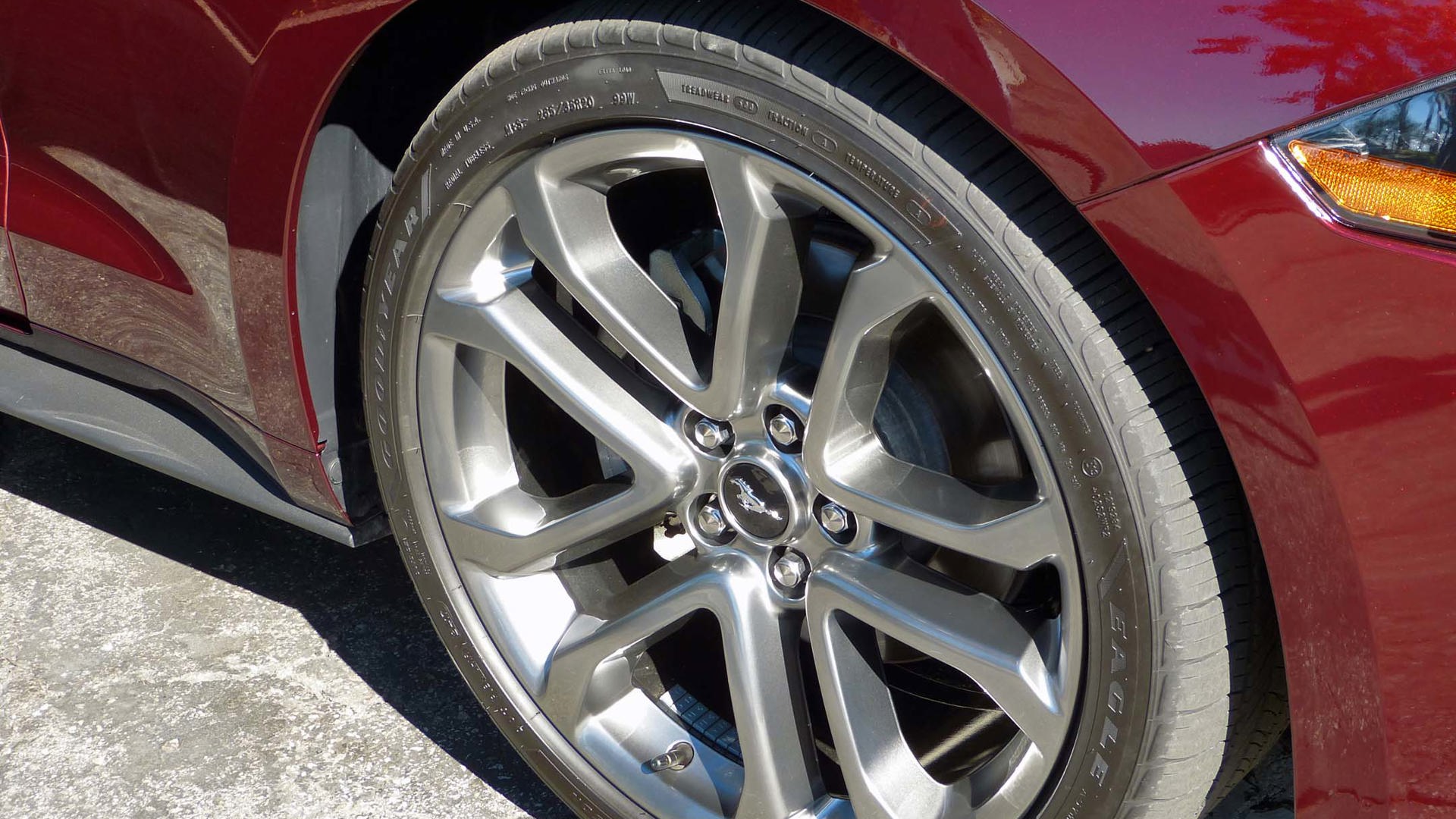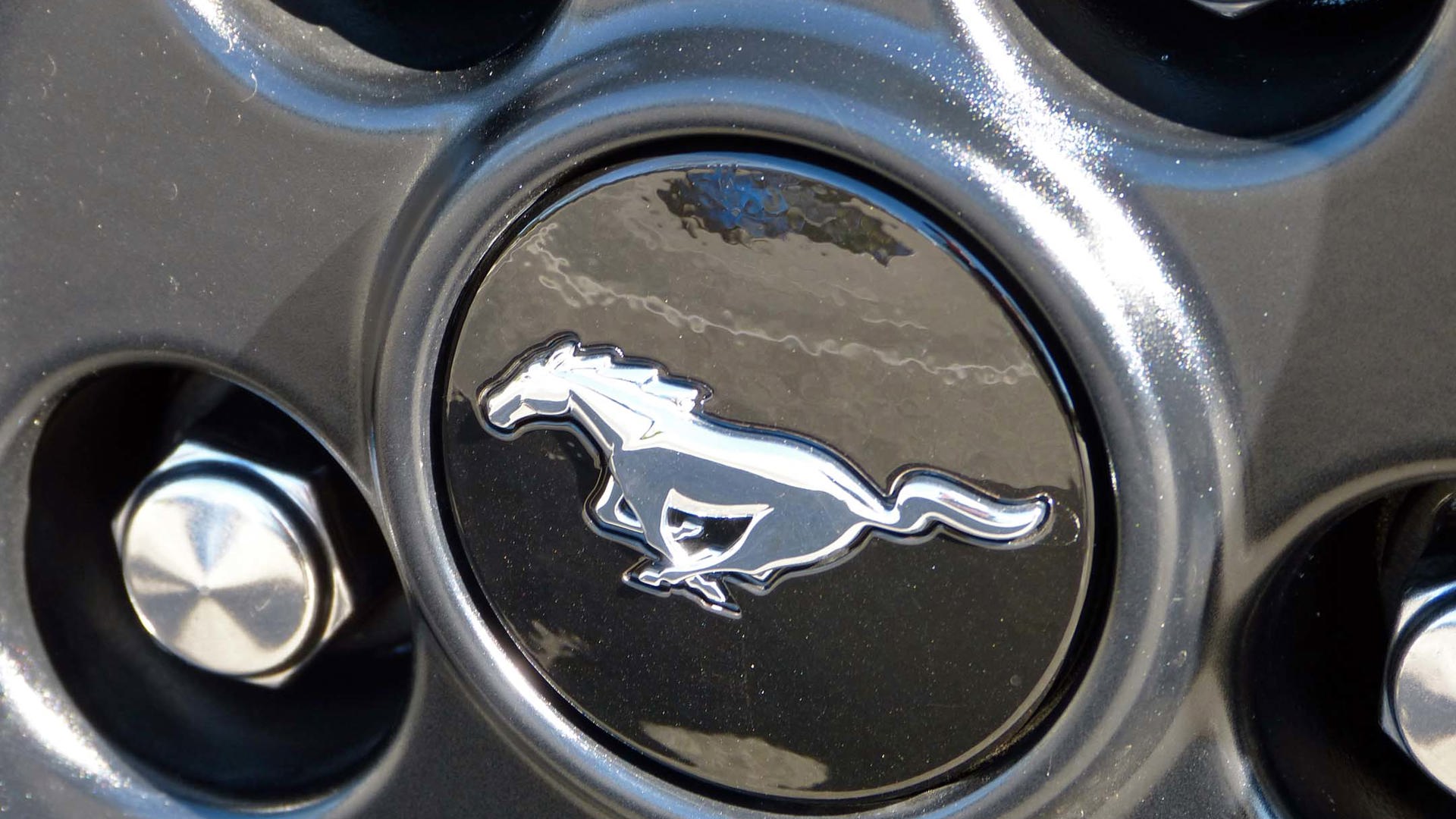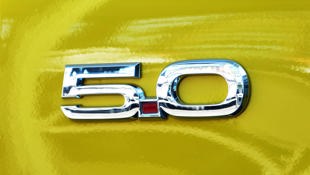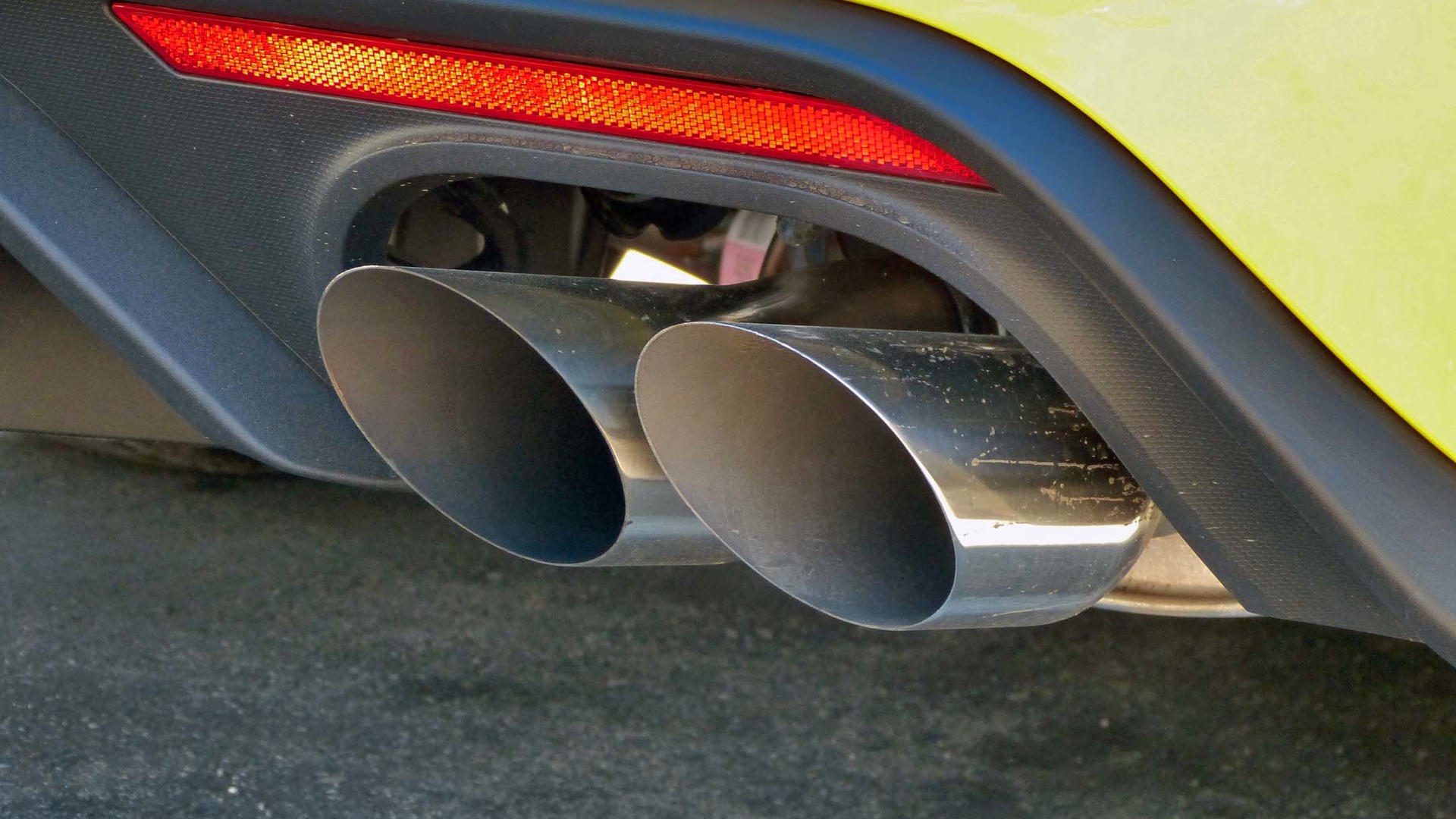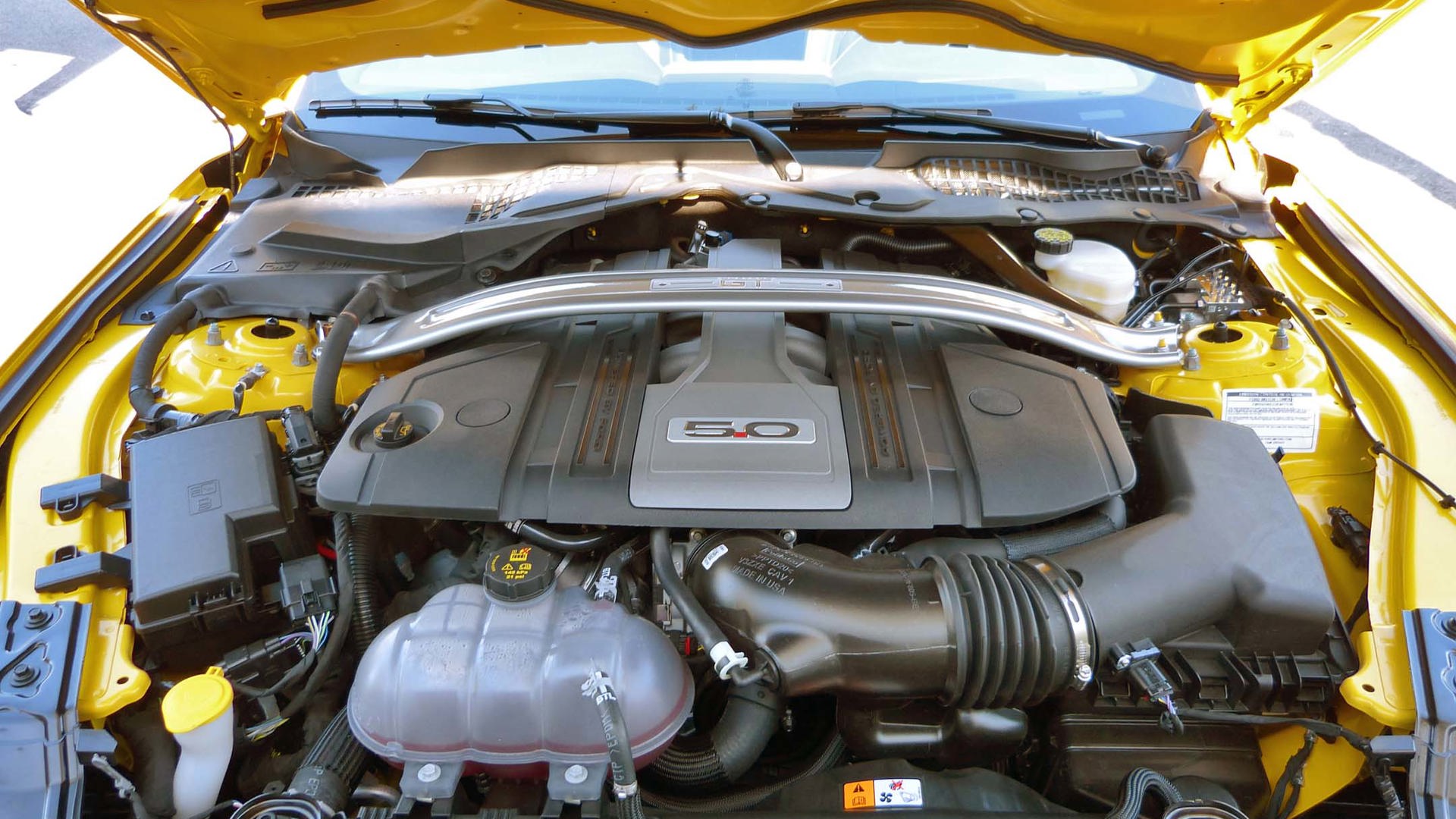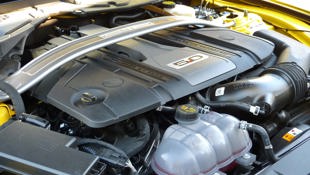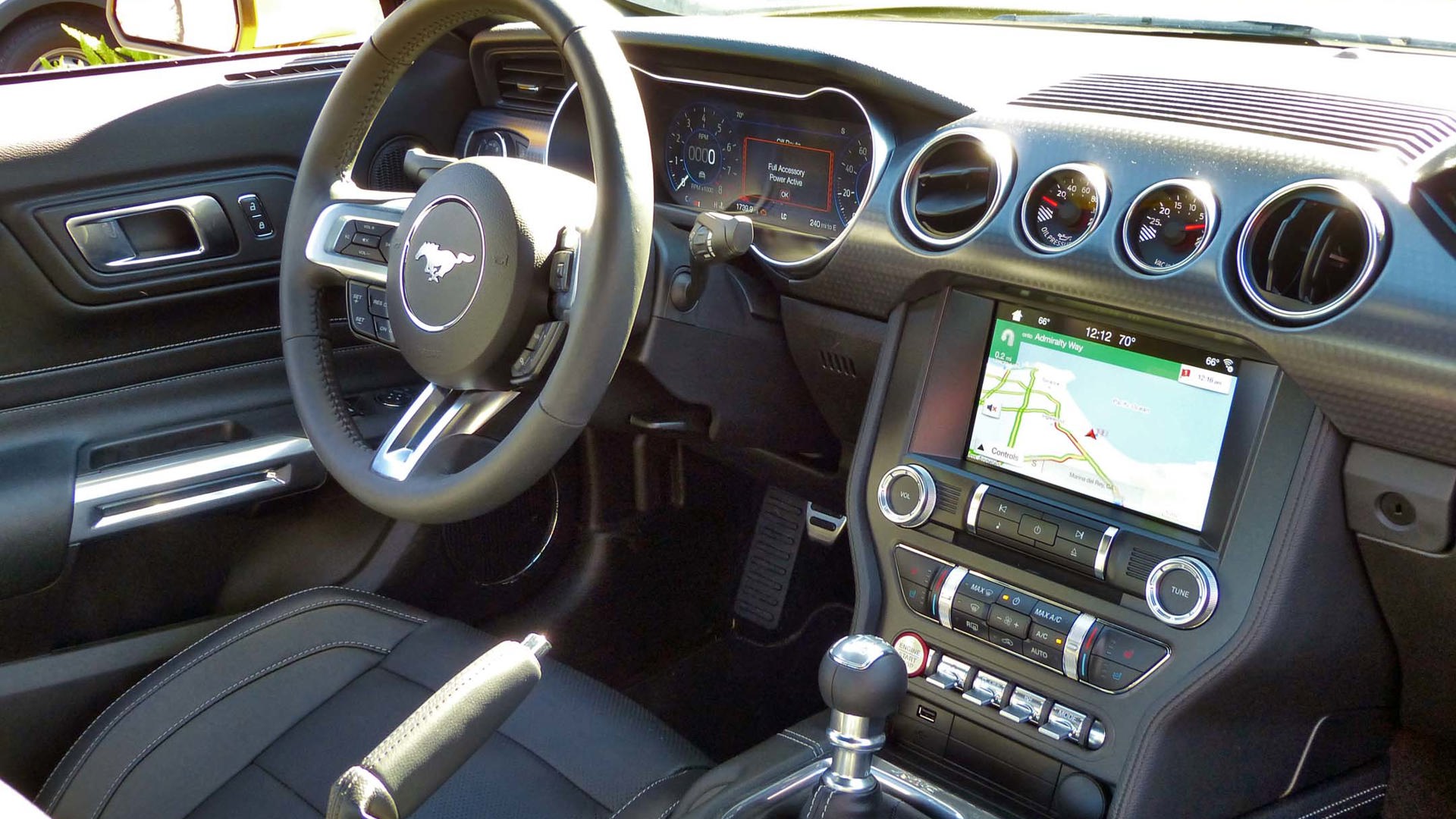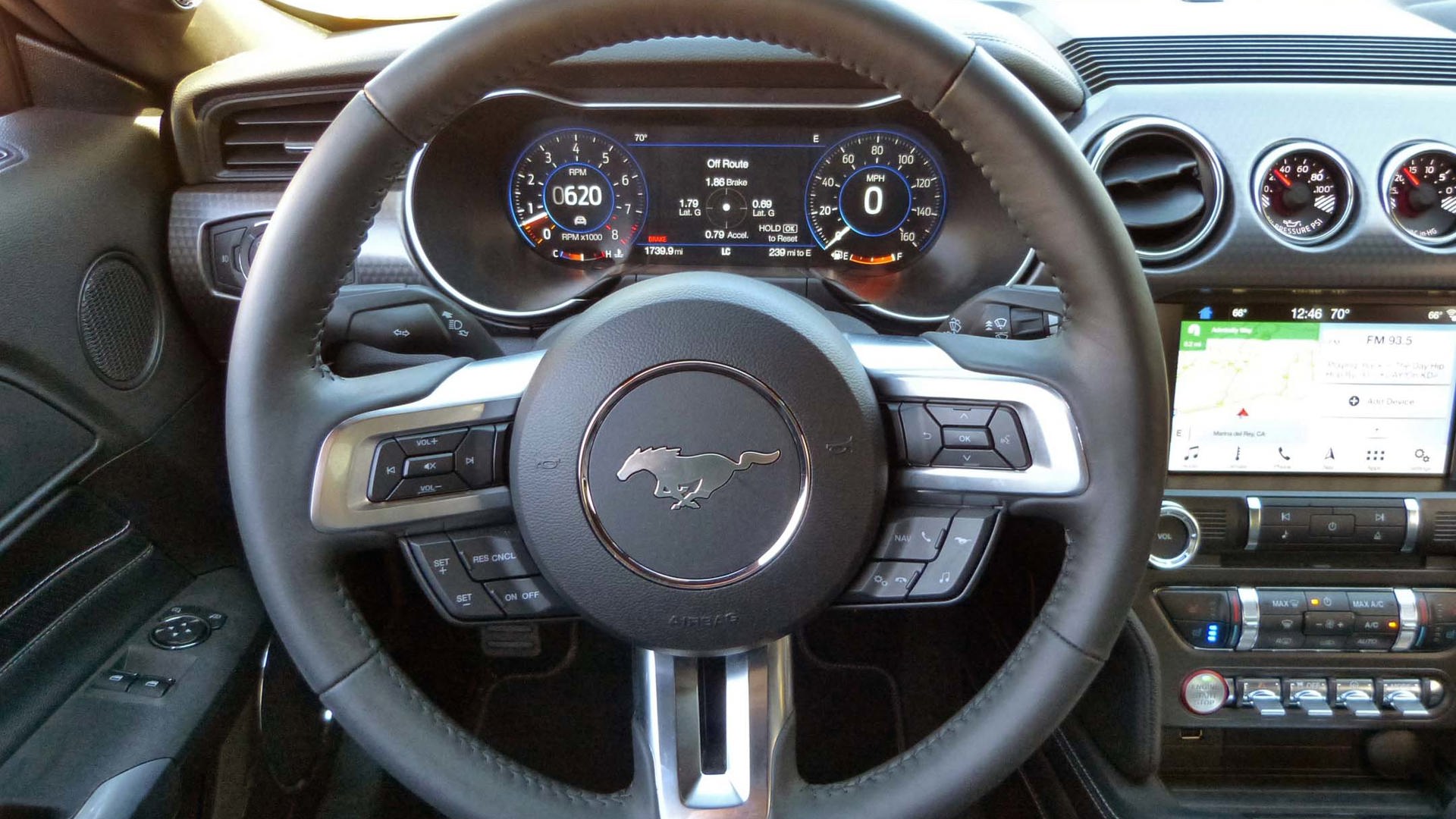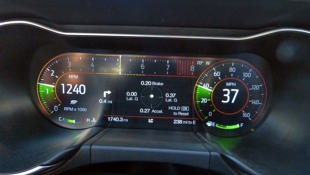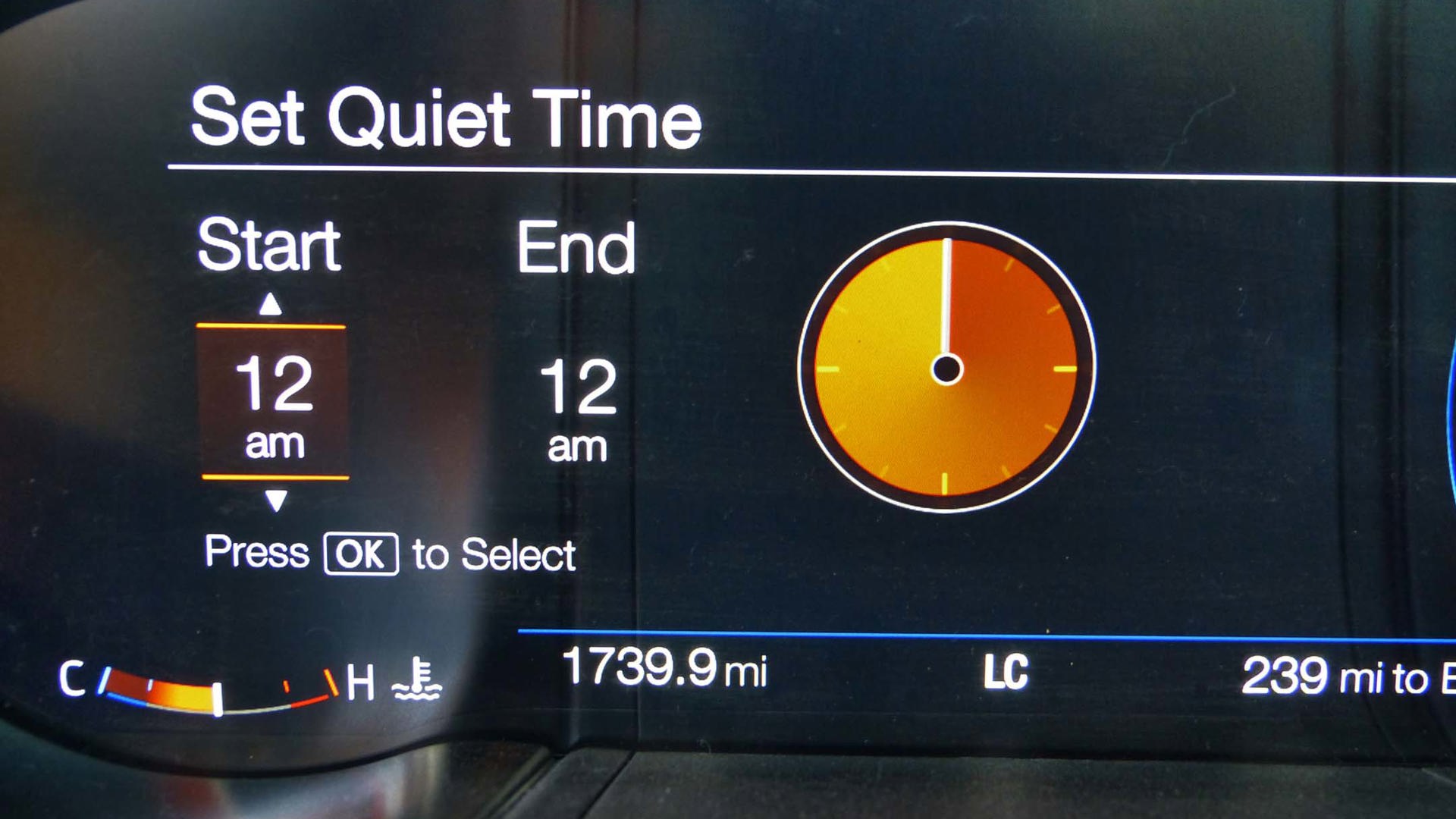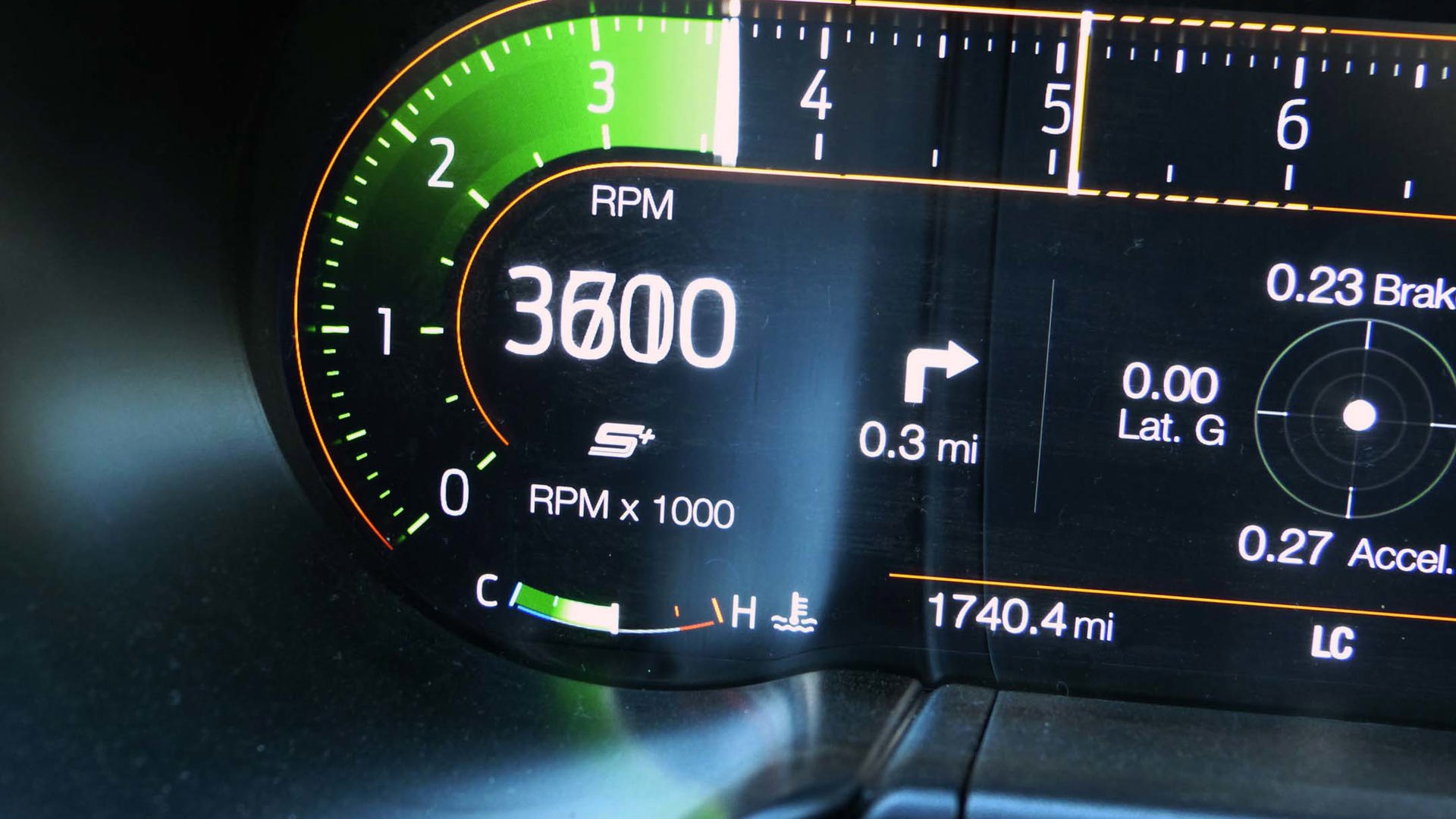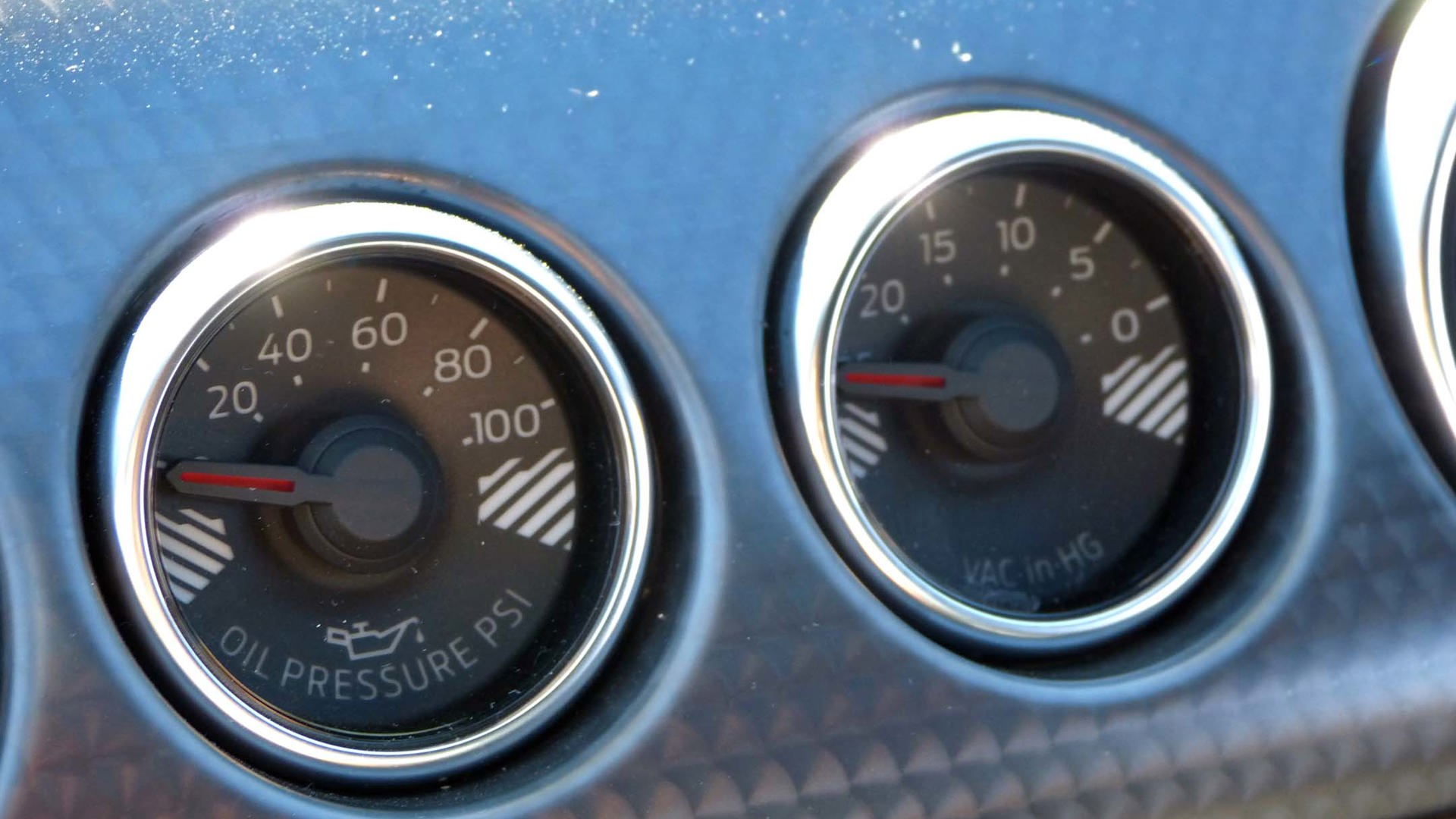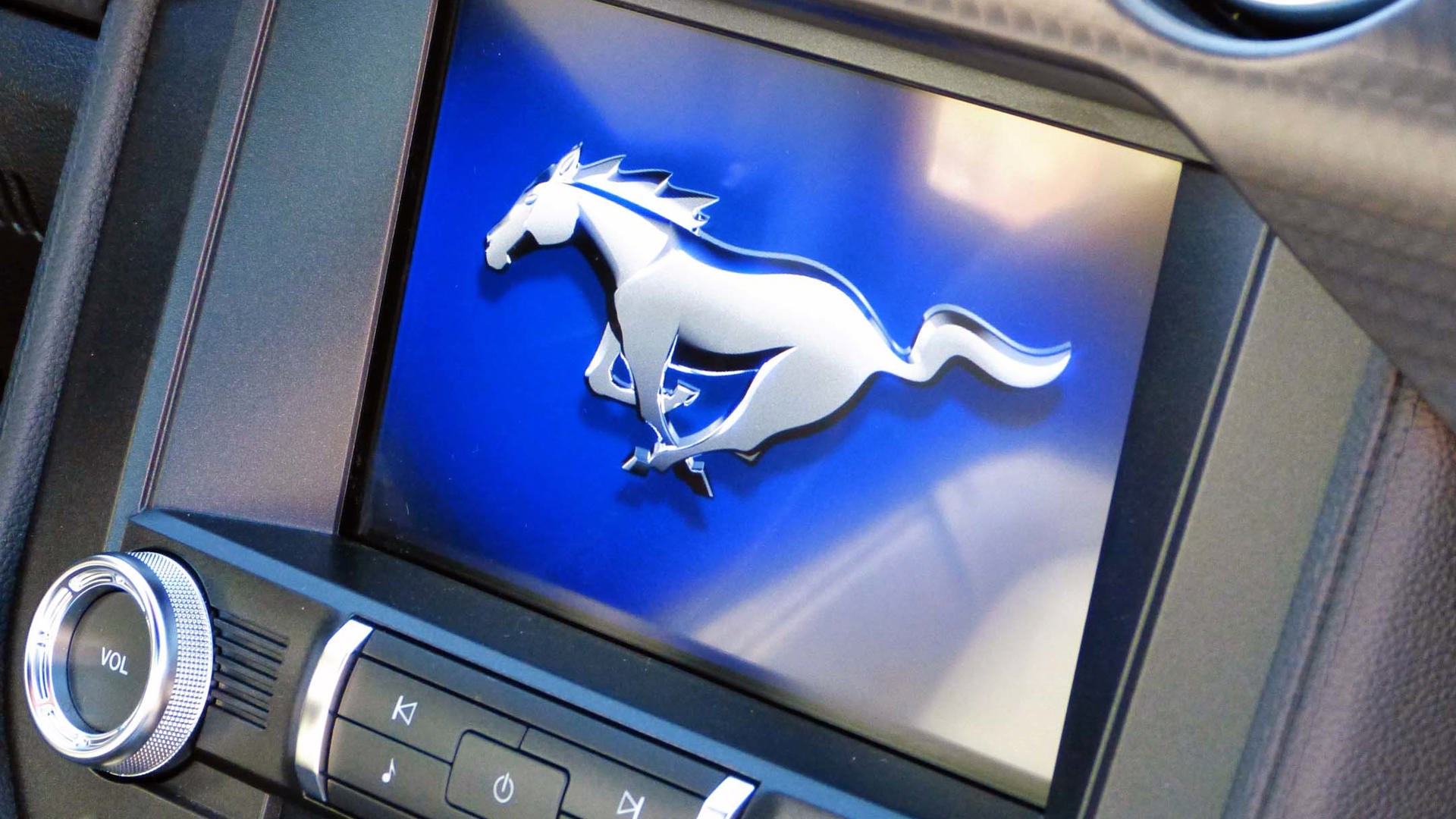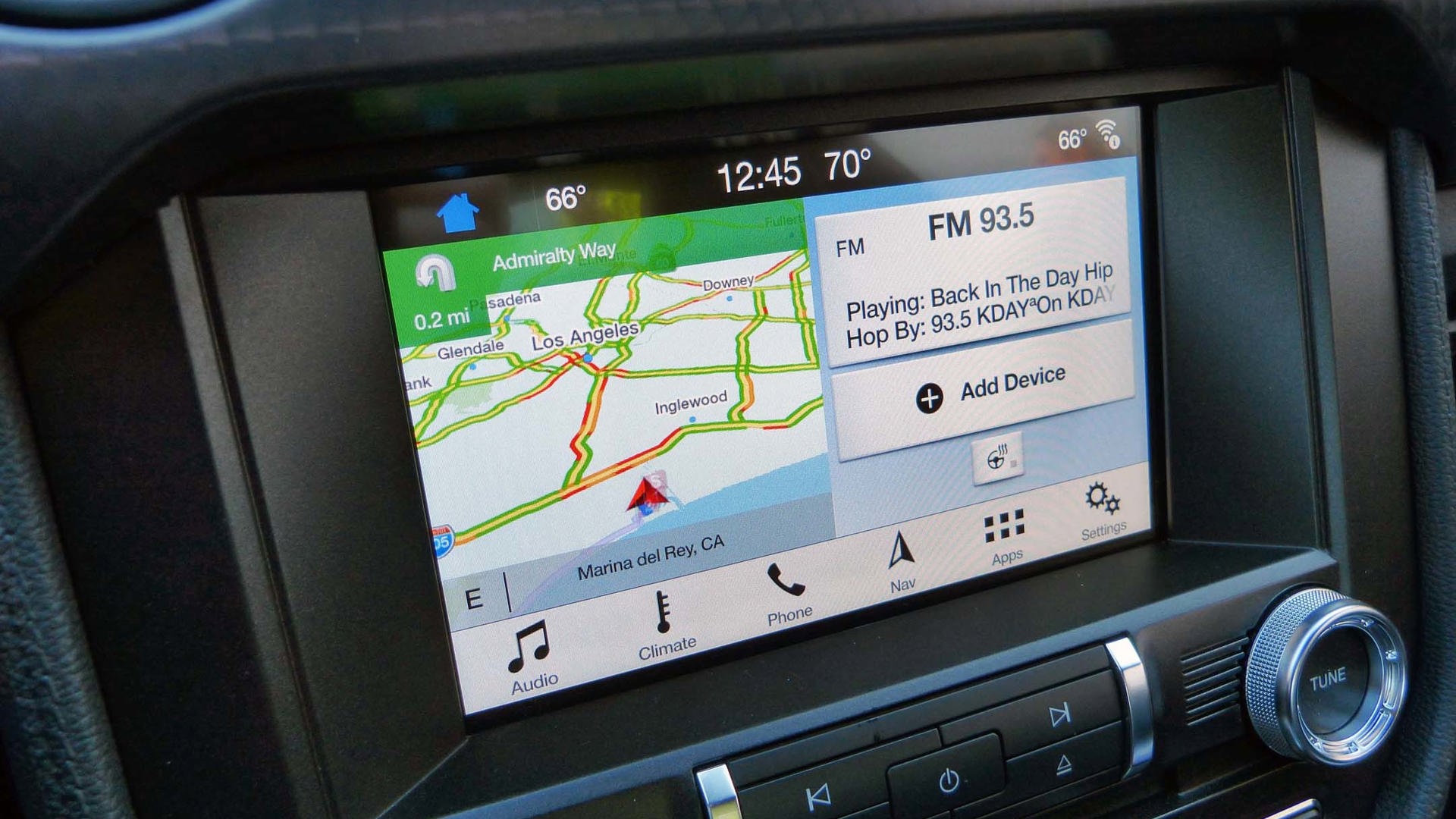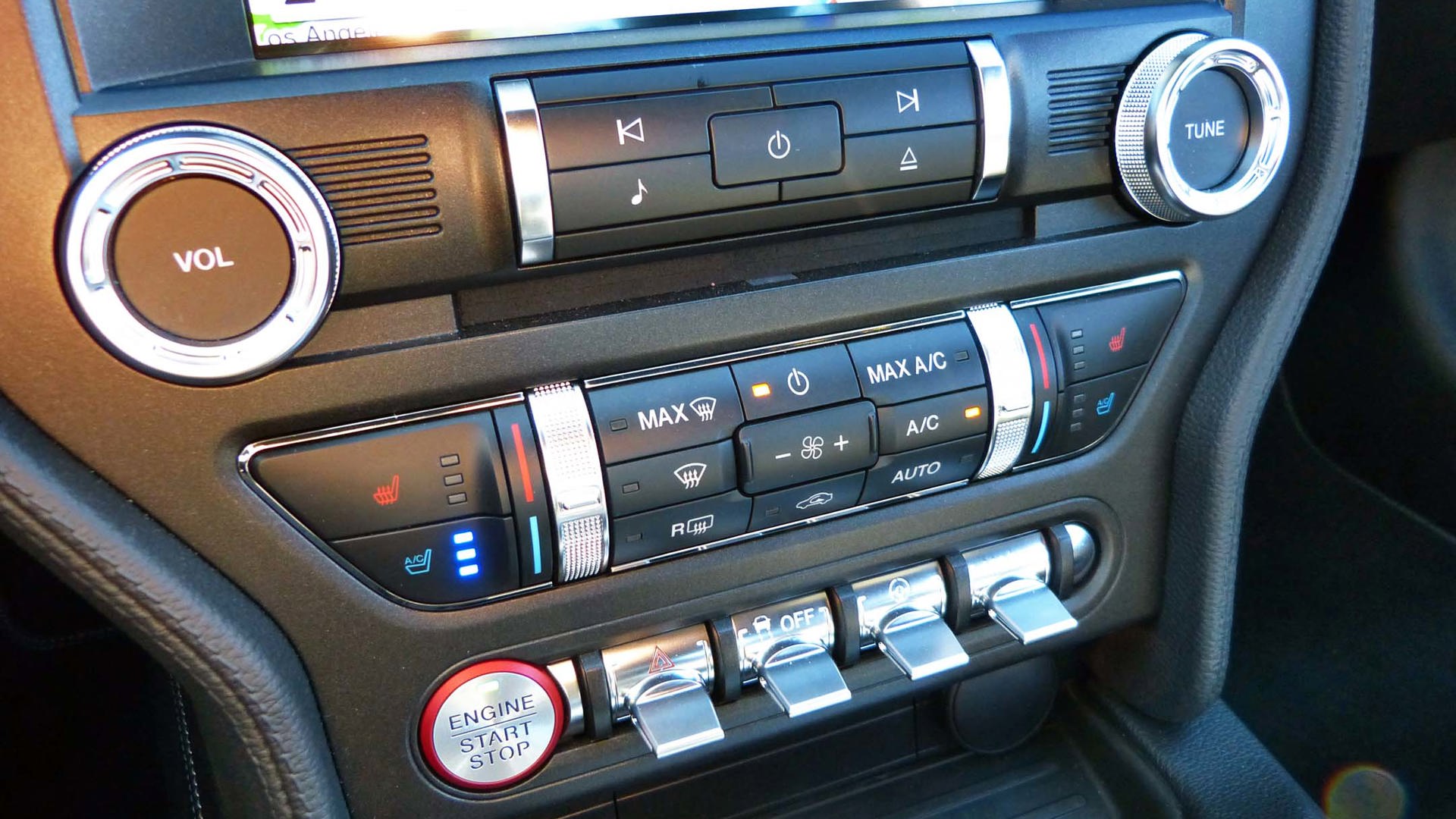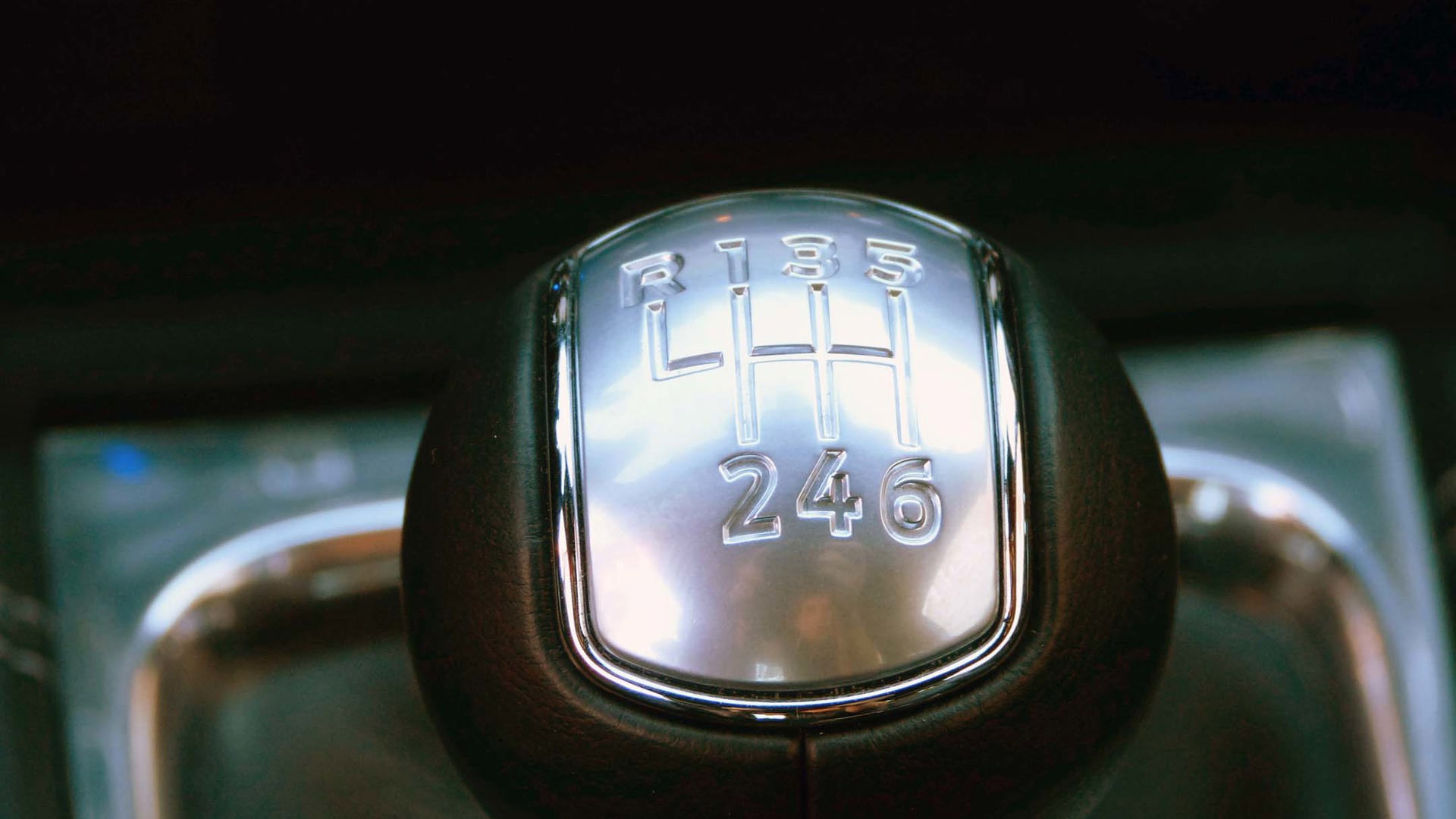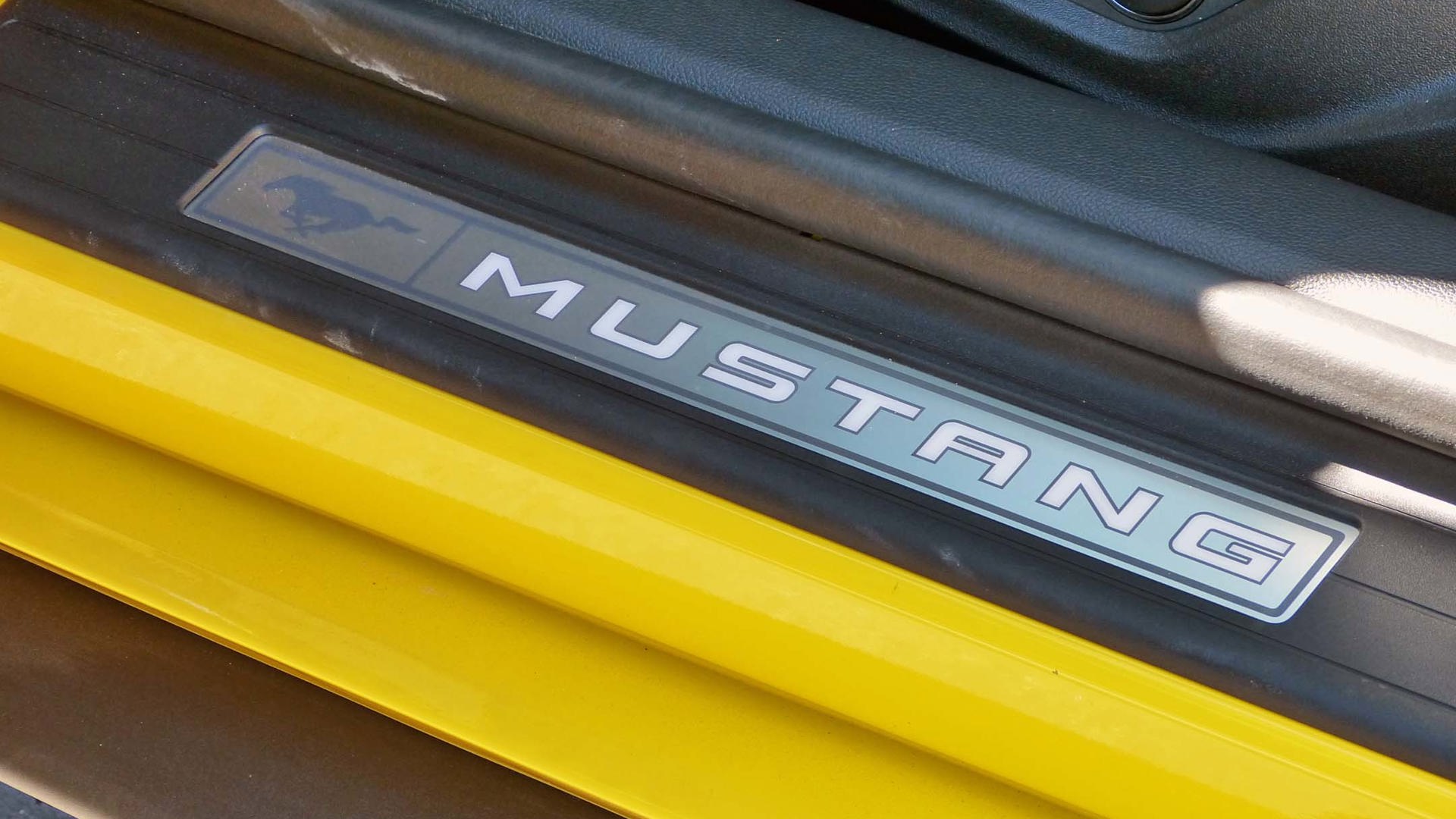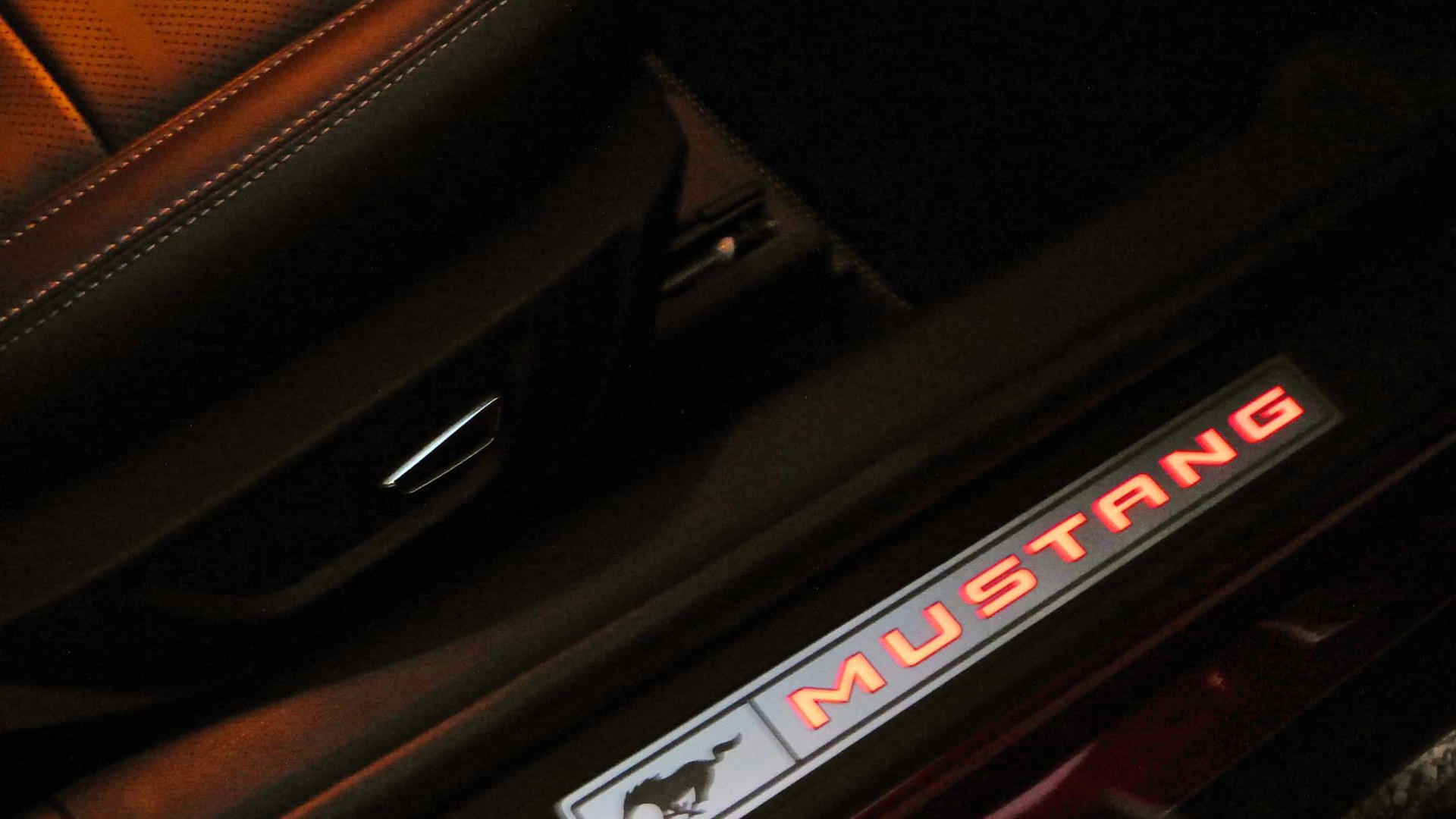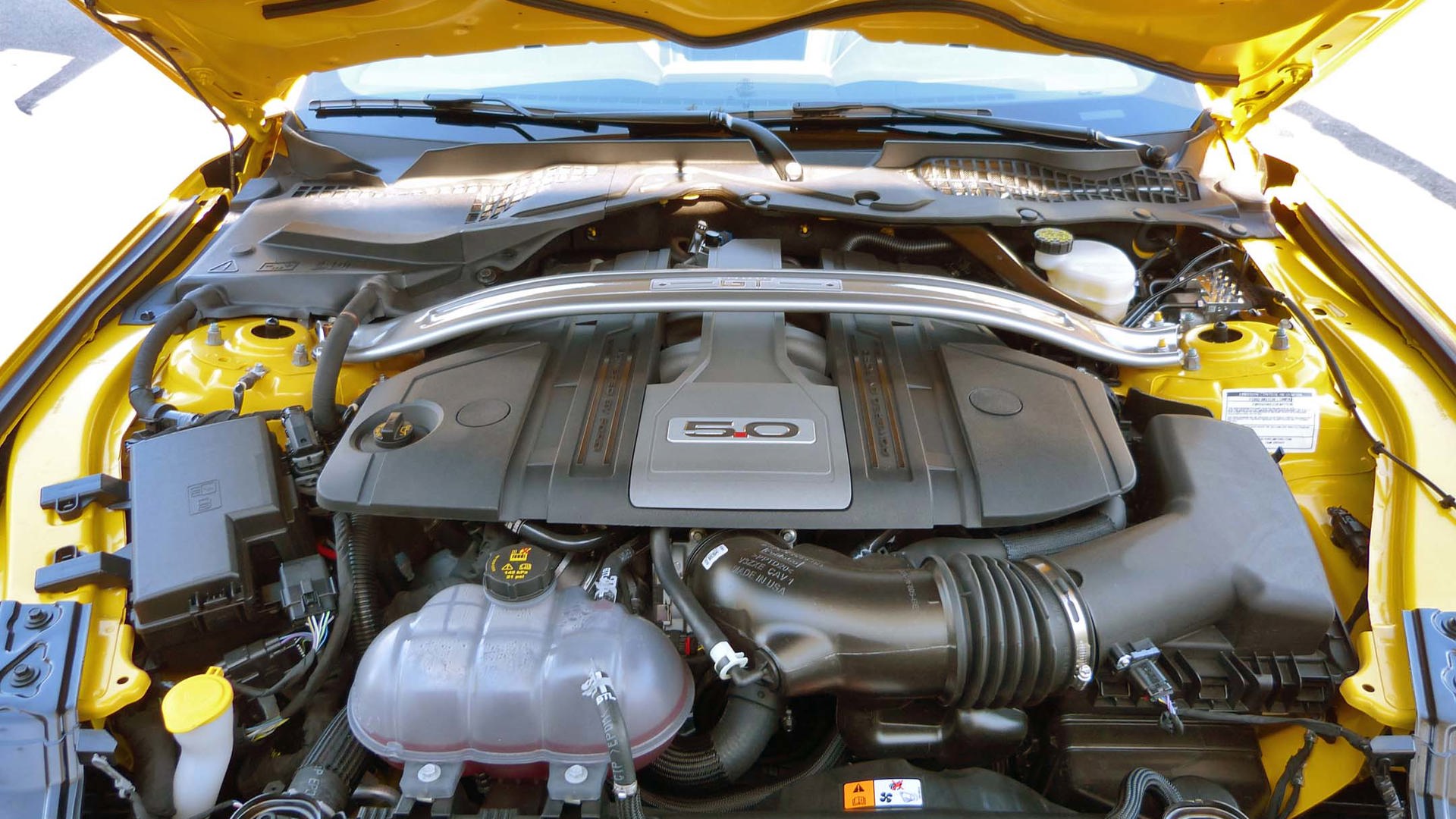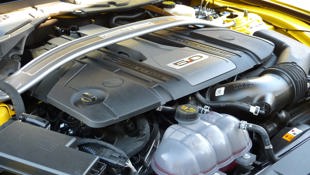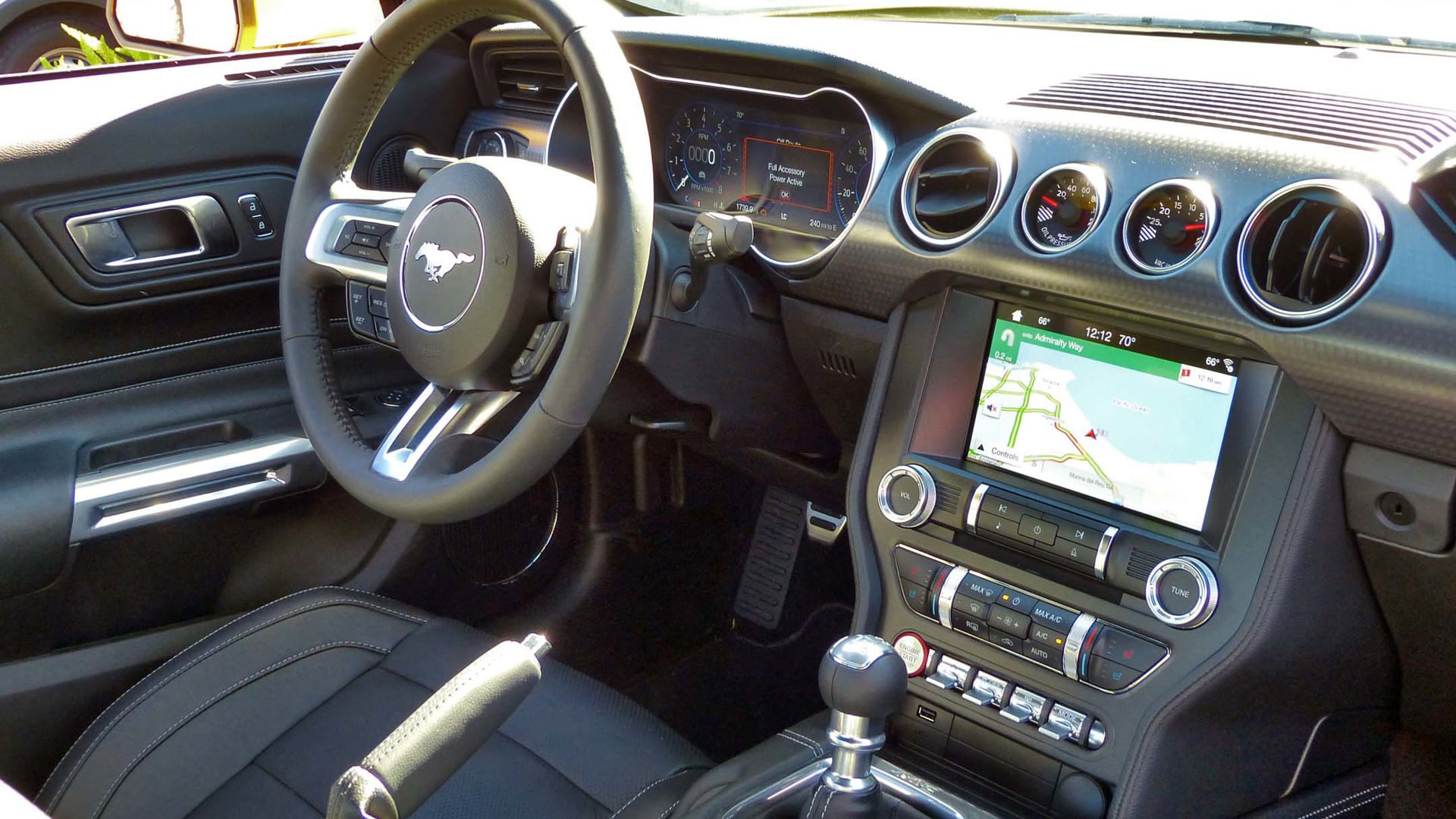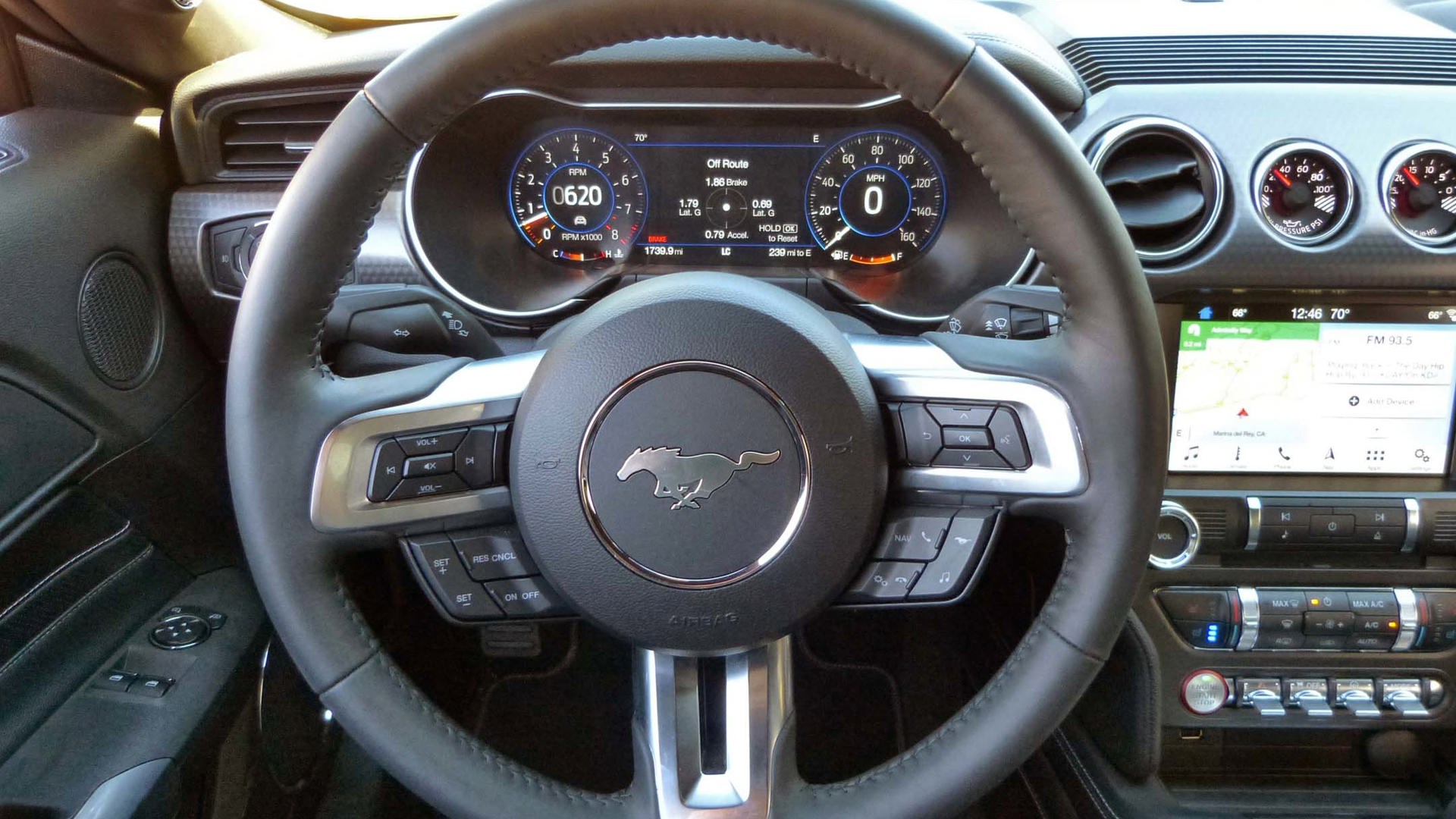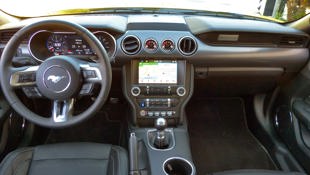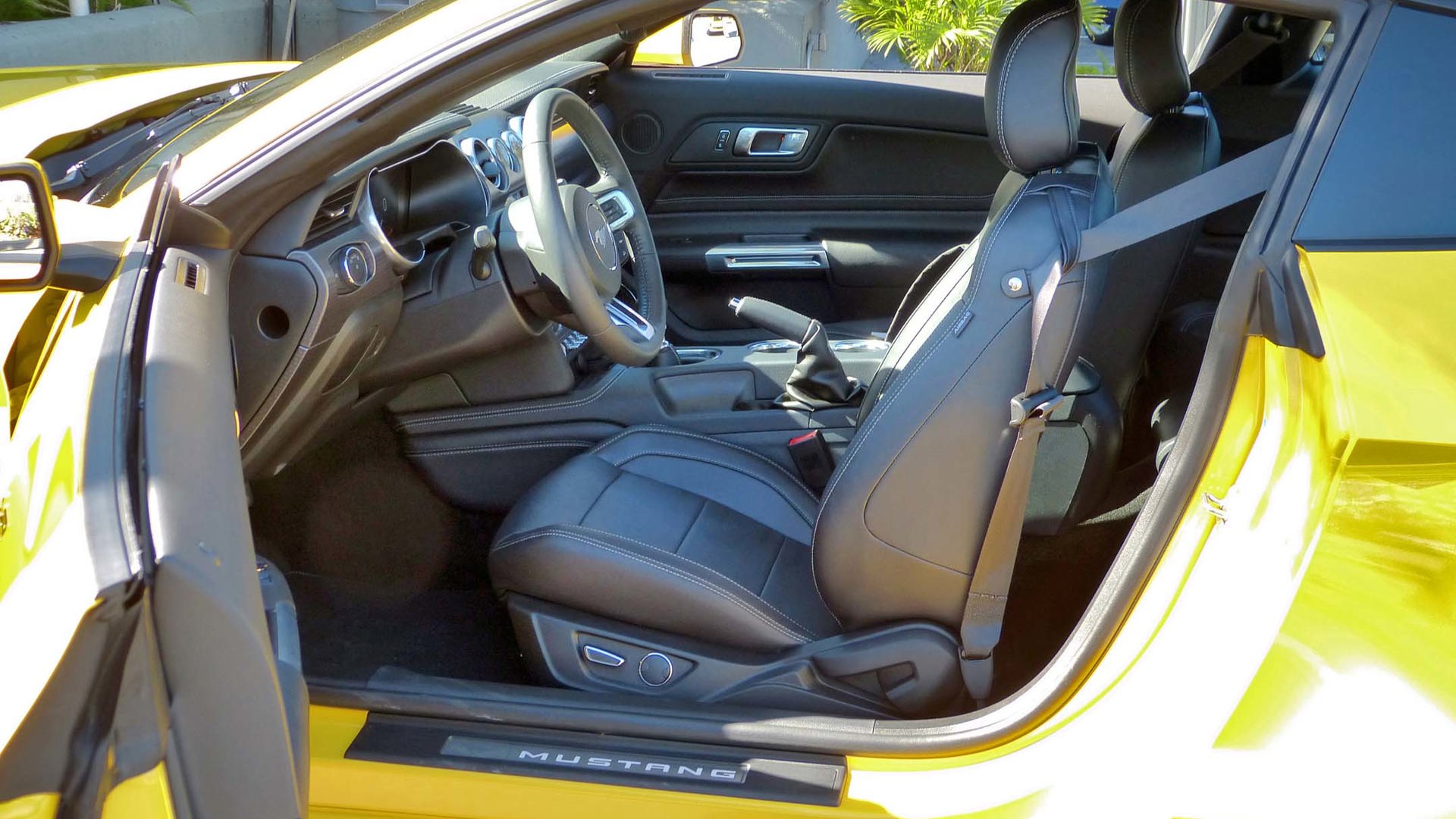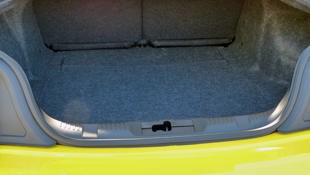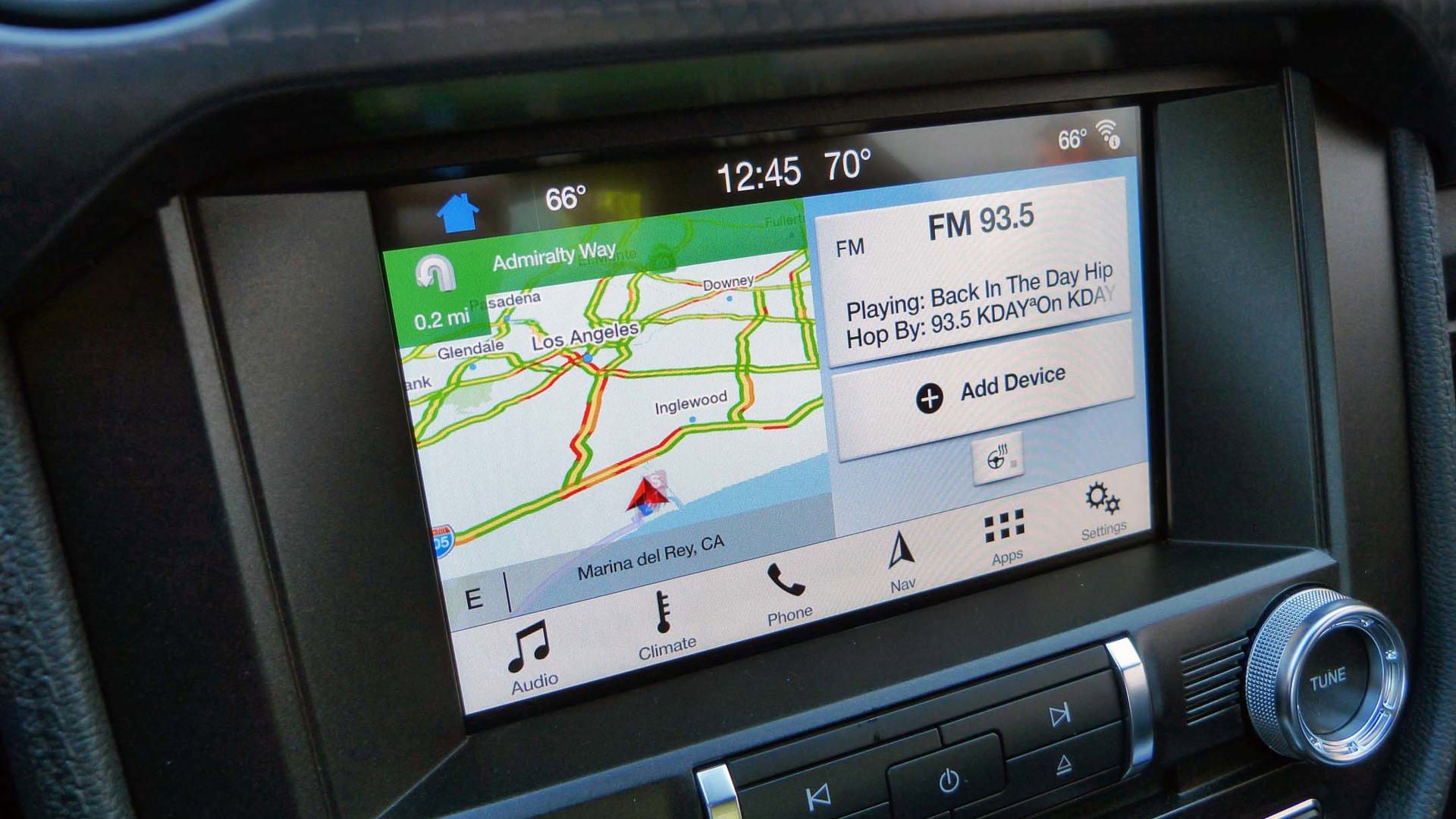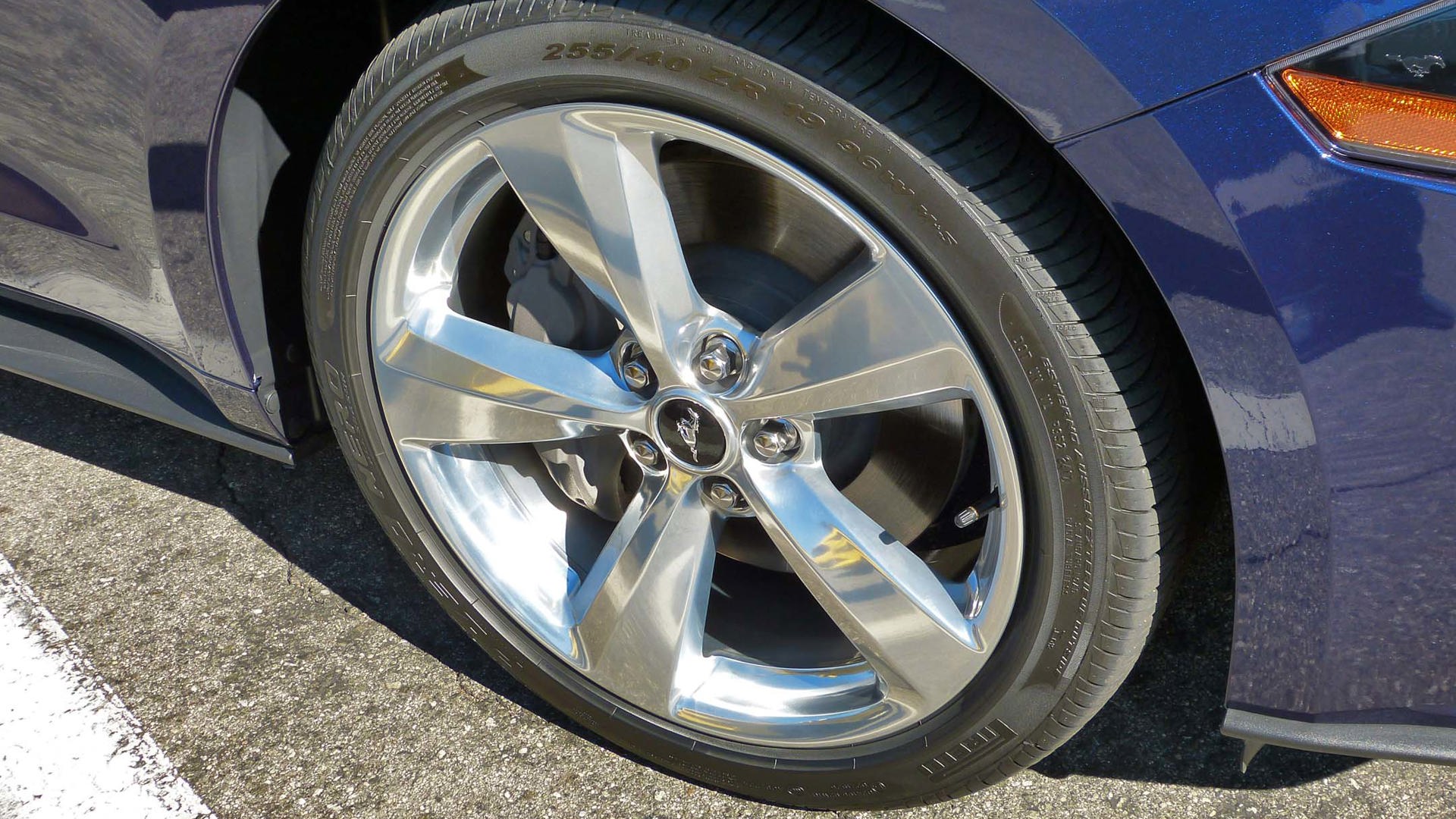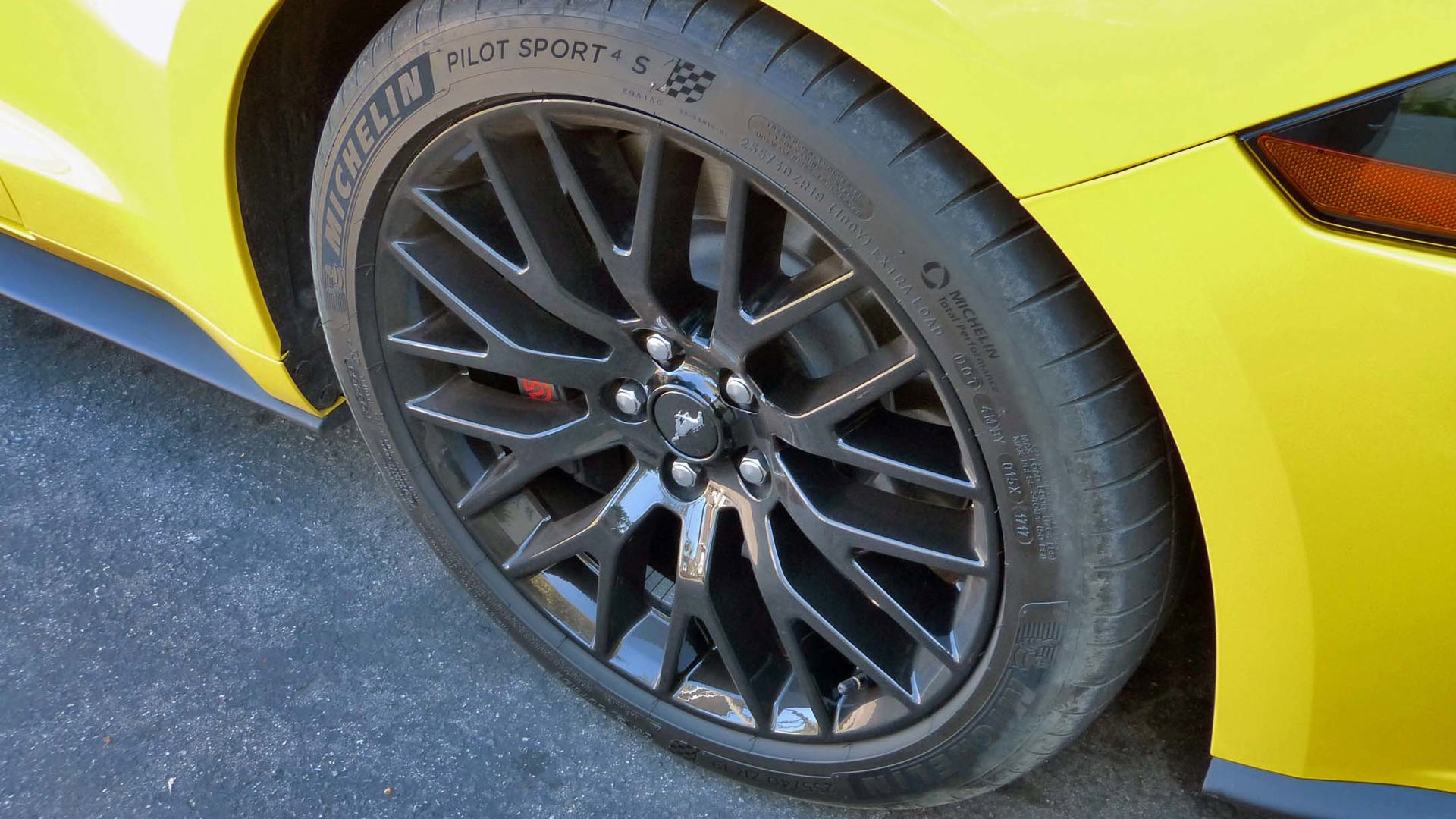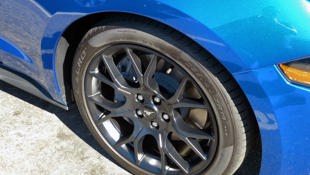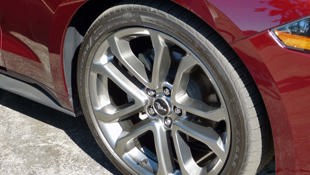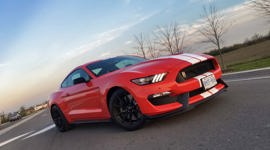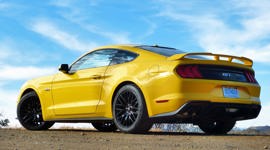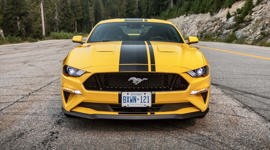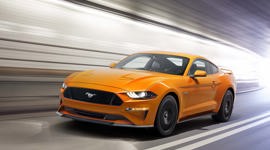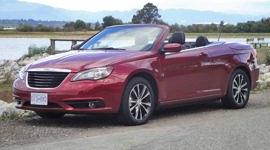The California hills are vivid orange in the hours after dawn. A squirrel darts across Mulholland drive and dives into the bushes, alarmed by the bark from the 5.0L V8 engine as I downshift. I look almost through the passenger window, ease my foot from the brake pedal, and turn in. Almost 180 degrees later, the Mustang takes a set, squats, and walks ever so gently out at the rear as I unwind steering and feed in throttle, 460 hp and 420 lb-ft of torque transforming premium fuel into endorphins.
Buy the GT, with the manual. Please.
The Michelin performance tires grip with vehemence, the translation from steering wheel to direction change catches me by surprise. This mid-cycle refresh has further improved the iconic pony car’s turn, in performance, the MagneRide suspension underneath working feverishly to trace the dips and heaves in the road without affecting my track through the corner. These roads are narrow and the Mustang is wide, but I’m able to keep my tires away from the tell-tale grooved centre line.
Not that anyone will notice. I’m alone in the car, and for all intents and purposes, alone on the road. Is the Mustang really a sports car?
Yes.
Drivetrain Upgrades
The 2018 Ford Mustang gets some minor aesthetic tweaks and for V8 models, a 25 hp bump to 460. The 2.3L Ecoboost four-cylinder units are bumped to 350 lb-ft of torque, with an available 310 hp. An all-new 10-speed automatic is available for both engines, with the six-speed manual being the standard. Tweaks to the manual have been designed to reduce shift inertia and improve the feel.
The automatic is smooth at low speeds, but higher speed shifts induce some driveline shudder – particularly upshifts. A co-driver on the event speculated the shudder is induced when the torque converter is locked up, which gels with my experience. Even with that mild driveline shudder, the autobox is a solid unit, which seems to use short grouped gears up to fourth at sub-30 km/h speeds and then quickly jump to the higher gears after that.
In Sport+ mode, the gearbox does a great job of downshifting in anticipation of corners, to the point I didn’t bother with the paddles after about 10 minutes of driving in the twisties.
Manual is the way to go though, and not only because the automatic is $1,500 more expensive. Sure, you get a 3.31 limited-slip diff with the autobox, but you can get a 3.55 LSD for $500 if you want it anyway.
The manual gearbox is a firm unit that gives great feel and a satisfying thud into gears. The throws are well-spaced, and the clutch point well-defined. Driving the manual gives you that much more connection to the car, and brings the Mustang alive in your hands.
There’s a small fuel economy penalty for choosing to do things yourself, with the turbo four rated at 11.0/7.4/9.4 L/100 km city/highway/combined in auto trim, and 11.0/7.7/9.5 in manual guise. Adding the Performance pack has a bigger impact, moving the needle to 11.8/8.2/10.2 (auto) and 11.8/8.4/10.3 (manual).
Want a V8? Of course you do. The GT has the same fuel economy whether you opt for the performance pack or not: 15.1/9.3/12.5 L/100 km in automatic trim, and 15.5/9.5/12.8 with the manual.
Do you care? Probably not.
Speaking of things you might not care about (but your neighbours might), the exhaust gets a new “quiet mode” for 2018. That mode can even be set on a timer, so that every time you start the car between the hours of 3am and 7am you don’t wake grumpy Jeff next door. It’s a very considerate feature made possible by the new $1,000 Active Valve performance exhaust. Quiet is just one of the four modes, others being normal, sport, and track.
There are five drive modes now, including normal, snow/wet, sport, track, and the new Drag mode – designed for maxing out your quarter-mile times.
EcoBoost models actually have their engine noise amplified by the car’s speakers. Frankly, I don’t mind this feature, but it was a little funny to drive first a V8, then an EcoBoost through a tunnel with the windows down. One resulted in a profound physiological reaction I can’t elaborate on in print, the other merely a snide chuckle. What is it I’m trying to say?
Buy the GT, with the manual. Please.
“But I want the V6,” – stiff bikkies. No V6 anymore. Only the okay-it-is-quite-good-but-really-get-the-V8 EcoBoost, or the “Yes, this is the correct decision” V8 GT.
That engine pulls with authority at all times, where the EcoBoost still suffers from a delay between throttle application and tire aggravation. It sounds better, it pulls harder, and it’s the real reason you came looking for a domestic sports car in the first place, be honest.
EcoBoost is a good option for the environmentally conscious. But so is a Chevrolet Volt.
MagneRide
Suspension with magnets is now the hallmark of any serious sports contender, and the MagneRide suspension is now available as a $2,000 option. It translates to an active damping system that uses speed, steering angle, brake pressure, engine torque, and g-force loads to manage the suspension depending on drive mode selection and ambient temperature.
Driving a MagneRide-equipped Mustang and a standard unit back-to-back highlighted how good the MagneRide is at keeping the car poised and connected in all situations. Back at the base camp for our drive loops, the team had set up a rig that allowed us to manipulate a shock absorber with the MagneRide system set in three different modes. The difference was pronounced. In the softest setting, I could push down on the lever with one hand and total ease. But in the hardest setting, I had to use all my body weight. Letting the lever return to the top position on its own showed the difference even more clearly. We started in “track” and watched it slowly return, then switched it to “soft” and watched it spring up the remaining distance in half the time.
I found that the turn-in and composure was best in track mode, with one small exception. If you go over a dip, or drop into an aggressive bit of banking at speed, it takes a little longer for the wheel to drop down and so you lose grip momentarily. When fitted with the Michelin tires the remaining tires have enough in hand to compensate for that anyway – not to mention that it’s always the inside front which breaks traction in that circumstance anyway. So you might lock a brake if you didn’t have ABS, but really this is a zero-sum issue. I only wrote this paragraph to sound smart. Did it work?
Interior Upgrades
The biggest change in the interior of the new Mustang is the 12-inch digital instrument cluster. This is a good system, which morphs depending on the drive mode chosen, but it’s not exactly what I expected. Audi’s Virtual Cockpit, for example, turns the instrument cluster into a fully customizable screen that can show your map across the whole screen with digital gauges overlaid on the nav.
The Mustang unit doesn’t show the map in the screen at all – just turn commands if you have navigation activated. And the gauges are pretty much locked into position on the outsides of the screen, making the middle section available for the usual suite of trip, audio, driver and vehicle setting information.
MyColour has been upgraded – you can now use a colour wheel to set the exact shade of green you want to use as your highlight colours in the digital gauges and ambient lighting. I chose “blinding and puke-inducing lime” for my primary colour, and “electric blue” for my secondary colour – mostly just to mess with the person driving the car after me.
When you use the line-lock feature, the digital display shows an animation of a spinning wheel and smoke – the spinning wheel in the display is synchronized to spin at the same speed as the actual spinning wheel on the car. How’s that for attention to detail?!
But wait! I haven’t told you about the best interior upgrade… you can get a heated steering wheel now! YAY! Heated steering wheel for the win. Can you drive a rear-wheel-drive sports car in winter? You can now. Because it has a heated steering wheel.
More stitched leather, including padded knee rests adorn the interior, and a pulsing start button is included.
On the Outside
Externally, a new front splitter improves front-end grip, and drag, helping with fuel economy. It looks tough as hell too. The hood gets new vents à la GT 350 and the headlights are now LED as standard. The rear three-bar taillights have been tweaked too, and there’s a redesigned quad-tip tailpipe setup on the GT. The gorgeous Orange Fury paint is new too, and I’m a fan.
There are 12 wheels available, and no, you can’t mix them up – you have to get four of the same. I asked.
Trims and Options
The base-trim Mustang is the $28,888 EcoBoost Coupe, and pricing climbs through the seven trim levels listed below to the $52,738 GT Premium Convertible.
There are two performance pack upgrades, the $3,000 EcoBoost Performance Package and the $3,700 GT Performance Package.
On the EcoBoost, the pack adds a 3.55 Torsen limited-slip diff, 19-inch alloys, 255/40R19 summer tires and a black-painted strut tower brace. You also get the aluminum instrument panel, oil pressure and boost gauges, heavy-duty front springs, larger brakes with four-piston calipers, bigger radiator, and a performance rear wing, as well as chassis tuning, different settings for the traction, stability, and ABS controls, and an upsized rear sway bar.
GT Performance packages get a 3.73 Torsen LSD in manual (or 3.55 for autos), 19x9” inch 255/40/R90 front tires and 19x9.5” 275/40/R19 rear performance tires plus six-piston front brakes with larger rotors. You get the same interior upgrades and the performance rear wing, but a K-brace for the strut towers and even bigger rear sway bar than the EcoBoost pack.
The $1,500 Safe and Smart Package adds adaptive cruise control, auto high-beam, blind-spot alert, land-keep alert, memory driver seat, pre-collision assist with pedestrian detection and automatic emergency braking, plus forward collision warning with brake support, and lastly, rain-sensing windscreen wipers.
It’s funny, because the Mustang continues to dance in the world between retro-muscle/pony car and modern sports car. It makes a solid claim for space in both worlds.
If you’re shopping for a Mustang because you want a retro-styled sports car that satisfies your lust for grunt and handling in a modern, well-featured package – you are making a good decision. Especially so if you choose yours with a manual gearbox, Performance Package, MagneRide suspension, and the V8 engine.
Pricing: 2018 Ford Mustang
2018 Ford Mustang EcoBoost Coupe: $28,888
2018 Ford Mustang EcoBoost Convertible: $33,888
2018 Ford Mustang EcoBoost Premium Coupe: $36,688
2018 Ford Mustang EcoBoost Premium Convertible: $41,988
2018 Ford Mustang GT Coupe: $39,988
2018 Ford Mustang GT Premium Coupe: $47,188
2018 Ford Mustang GT Premium Convertible: $52,738
Destination and Delivery: $1,750
